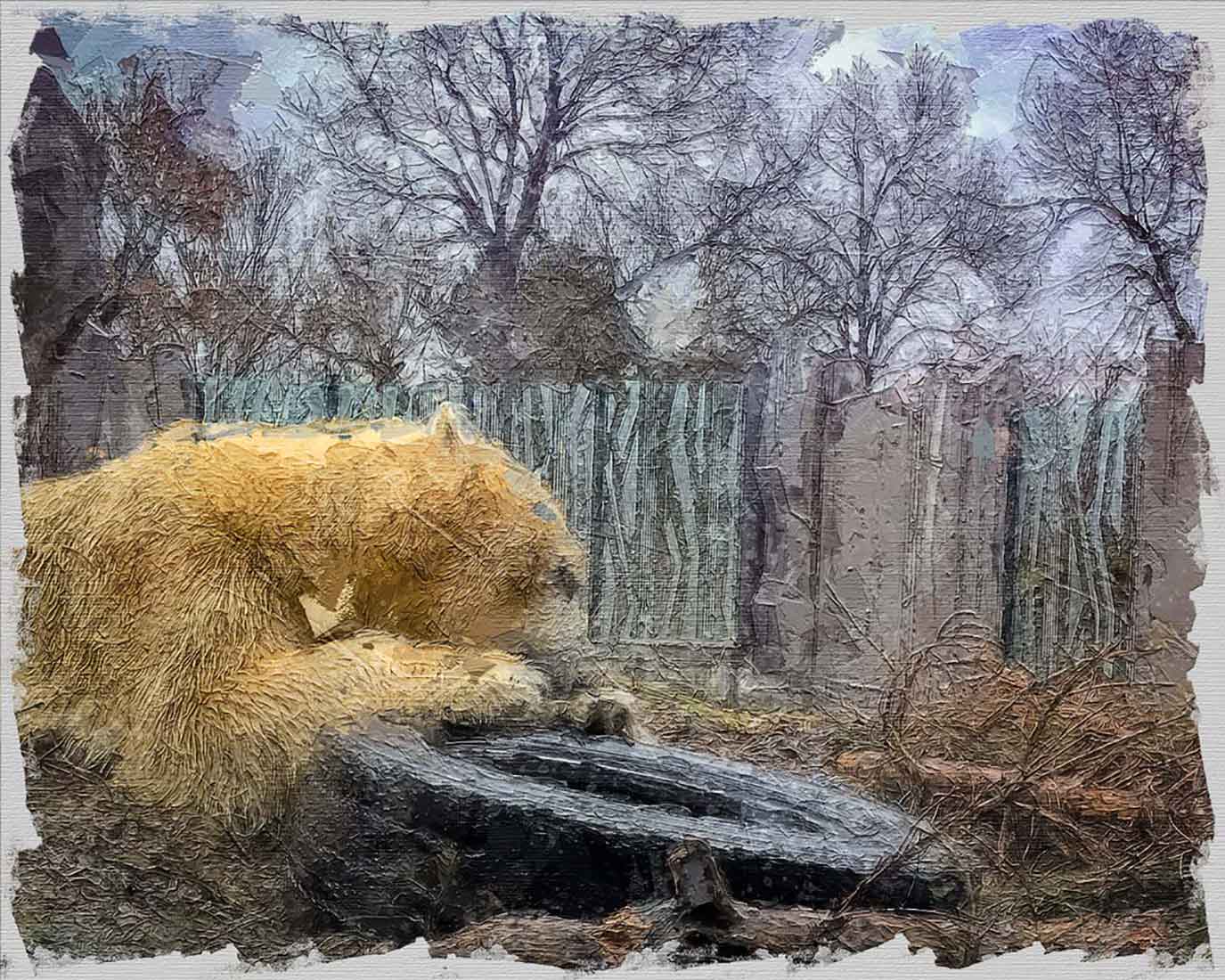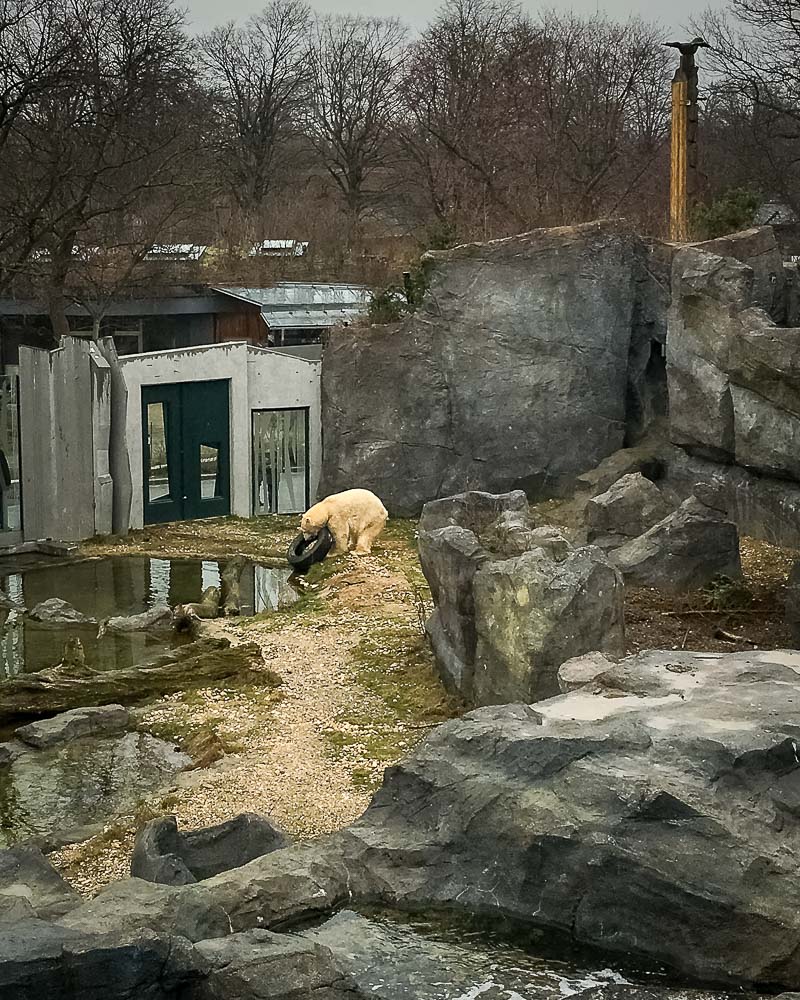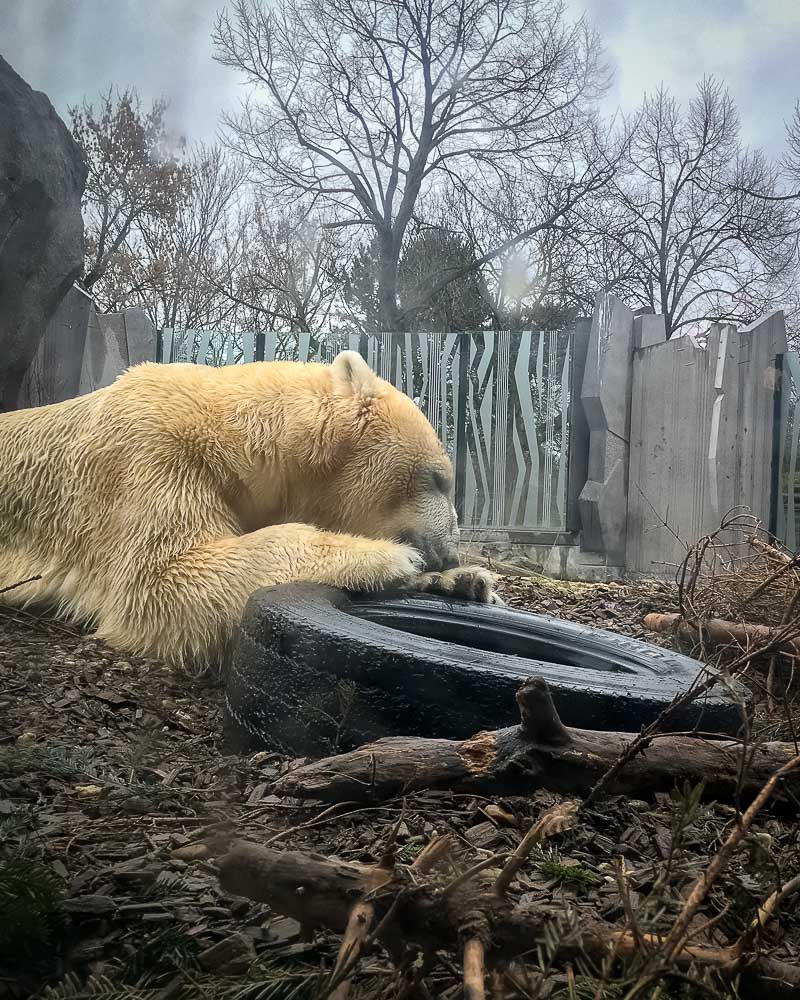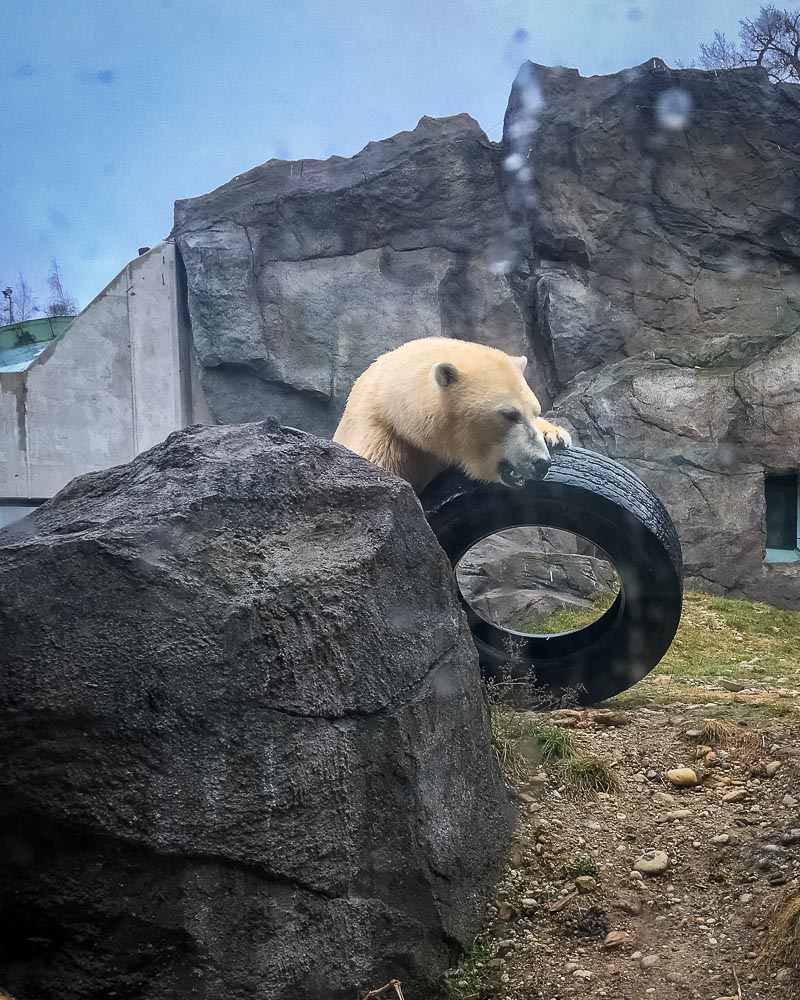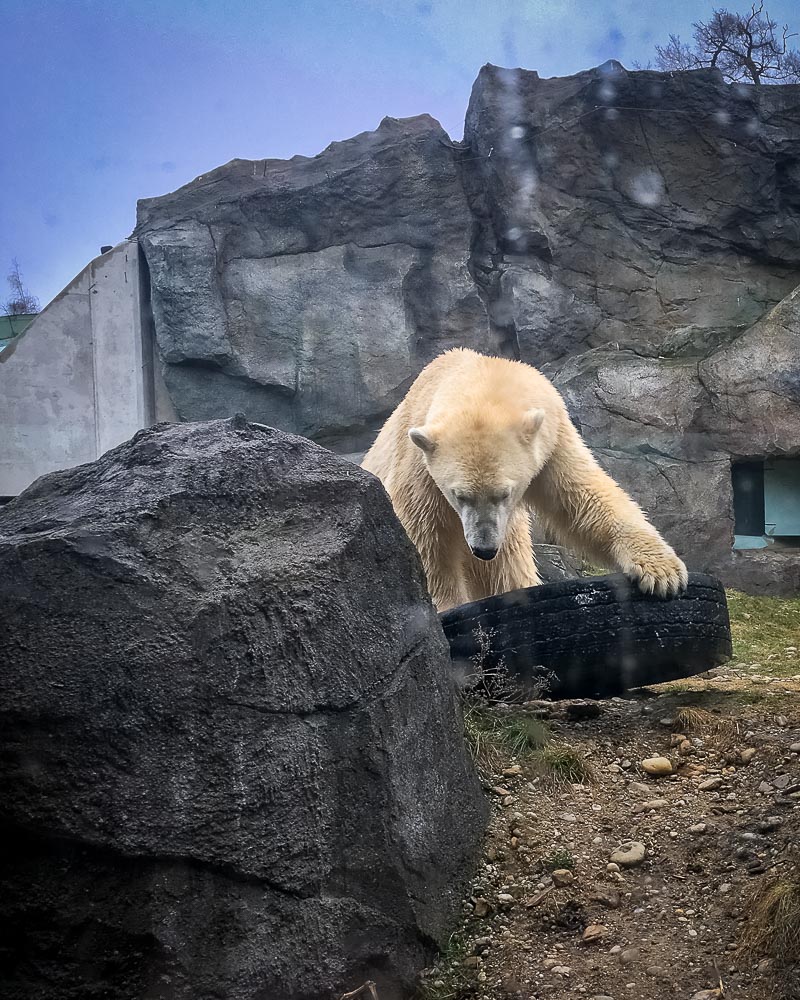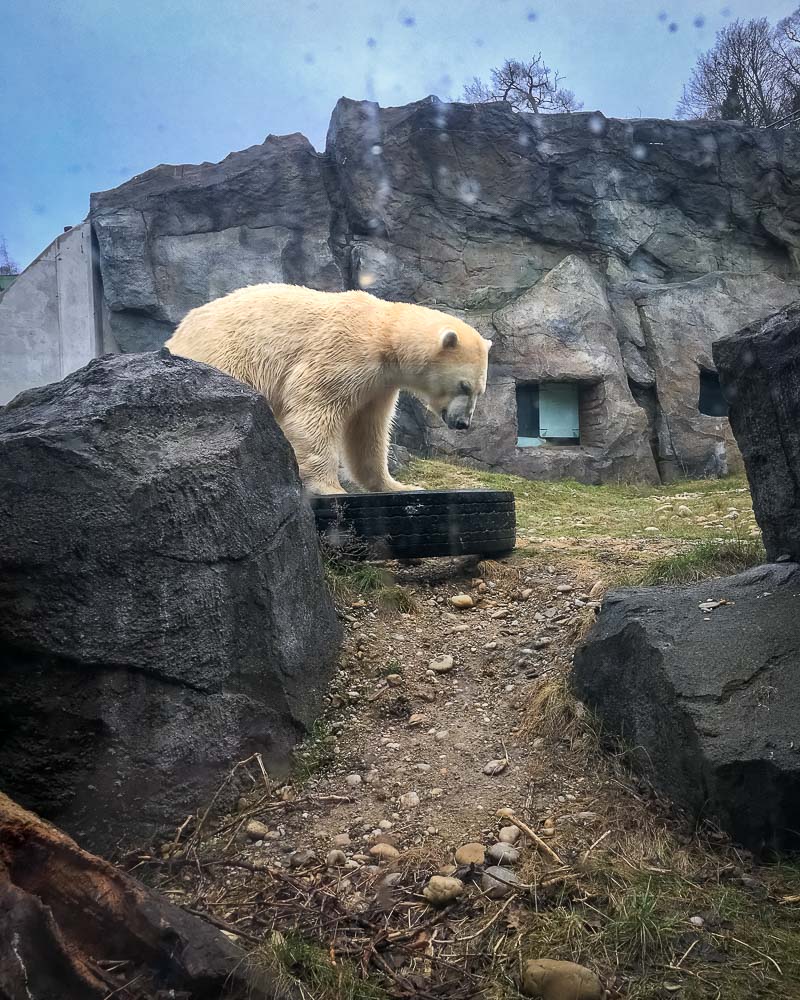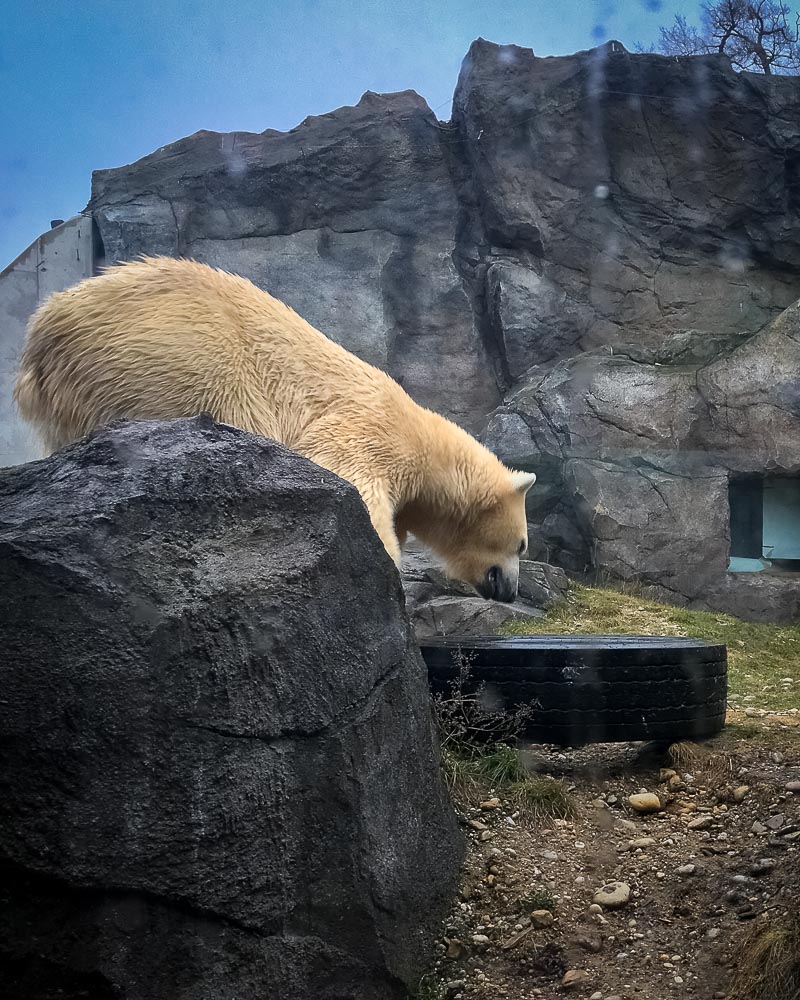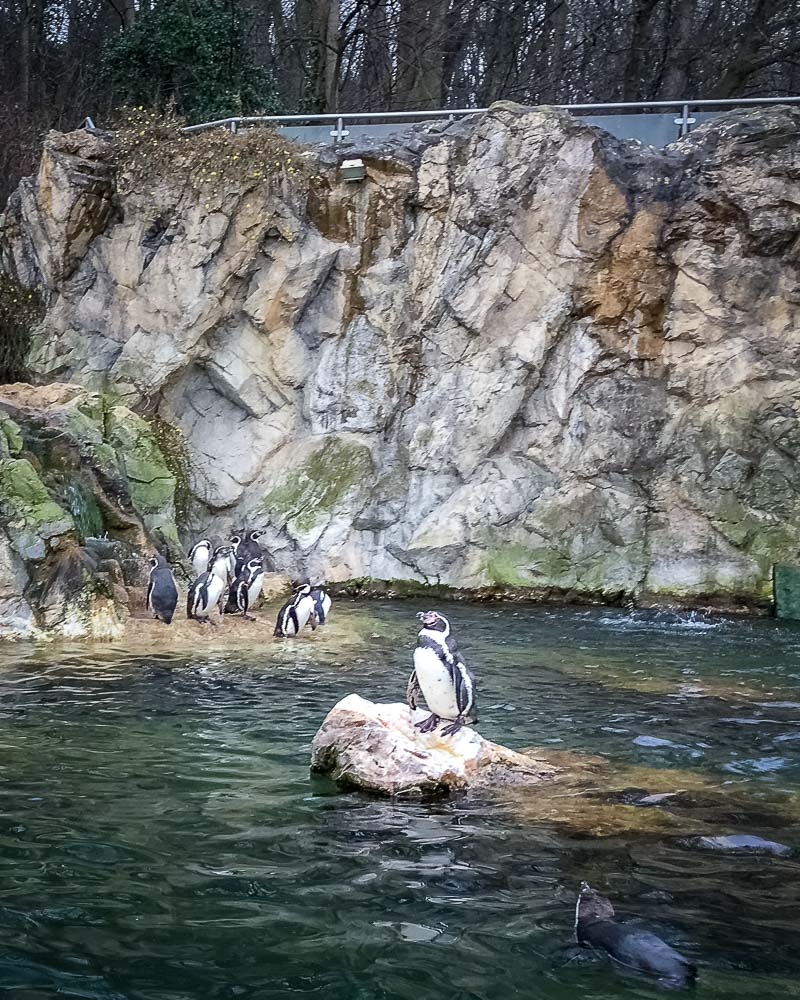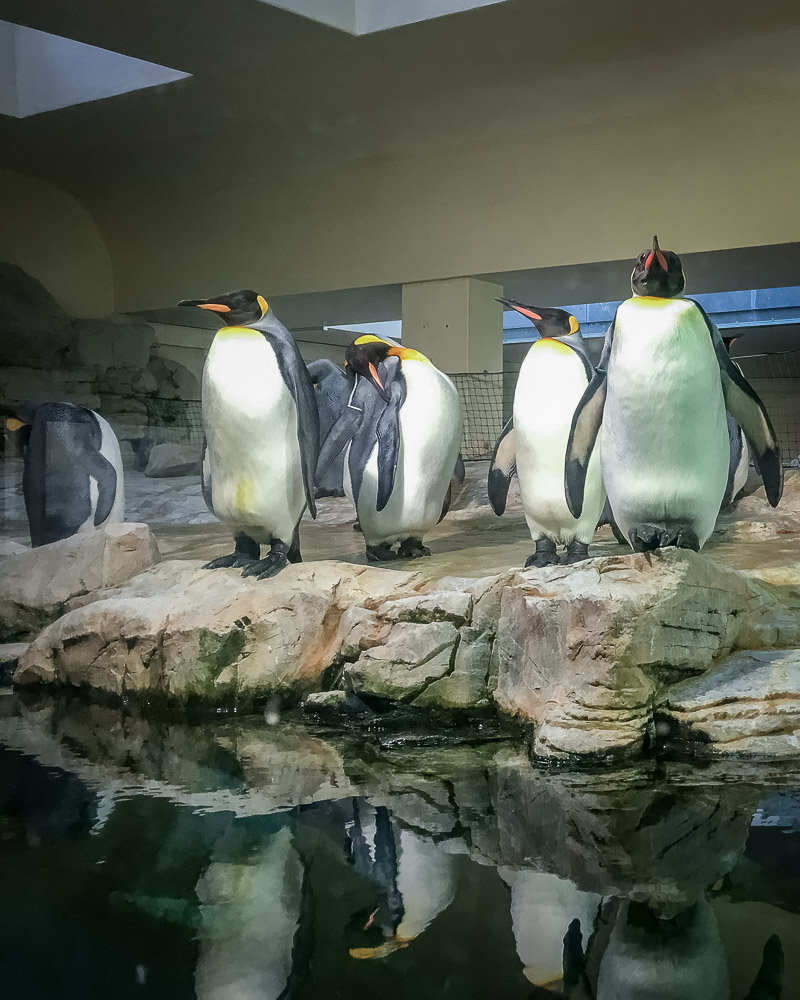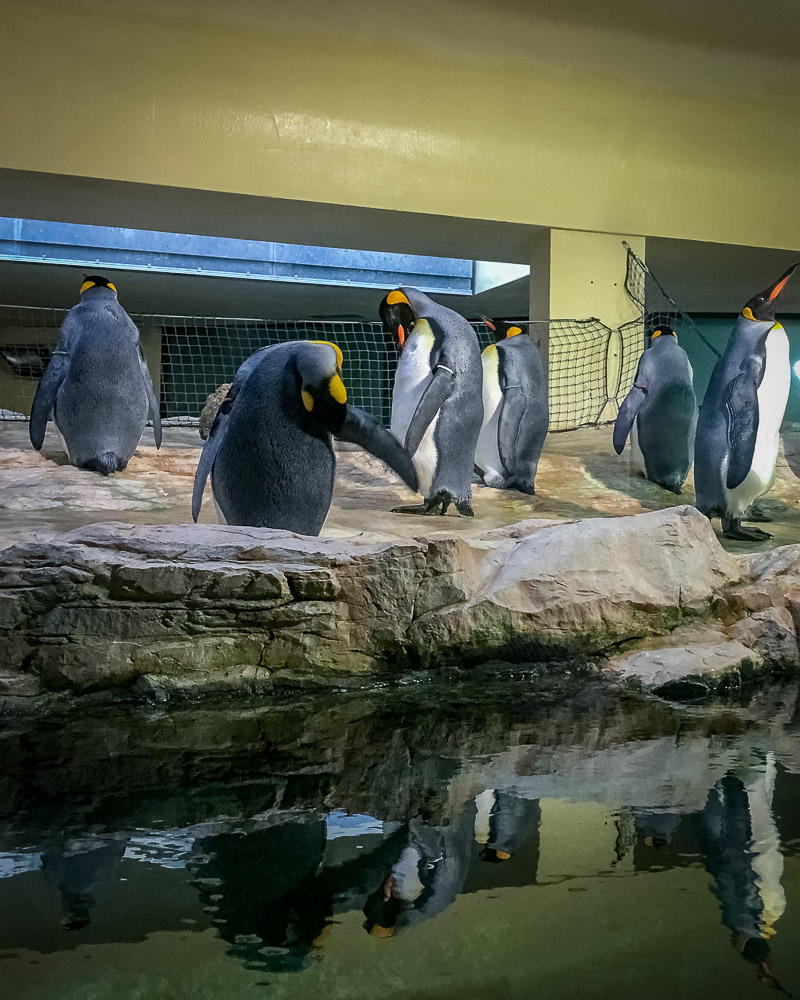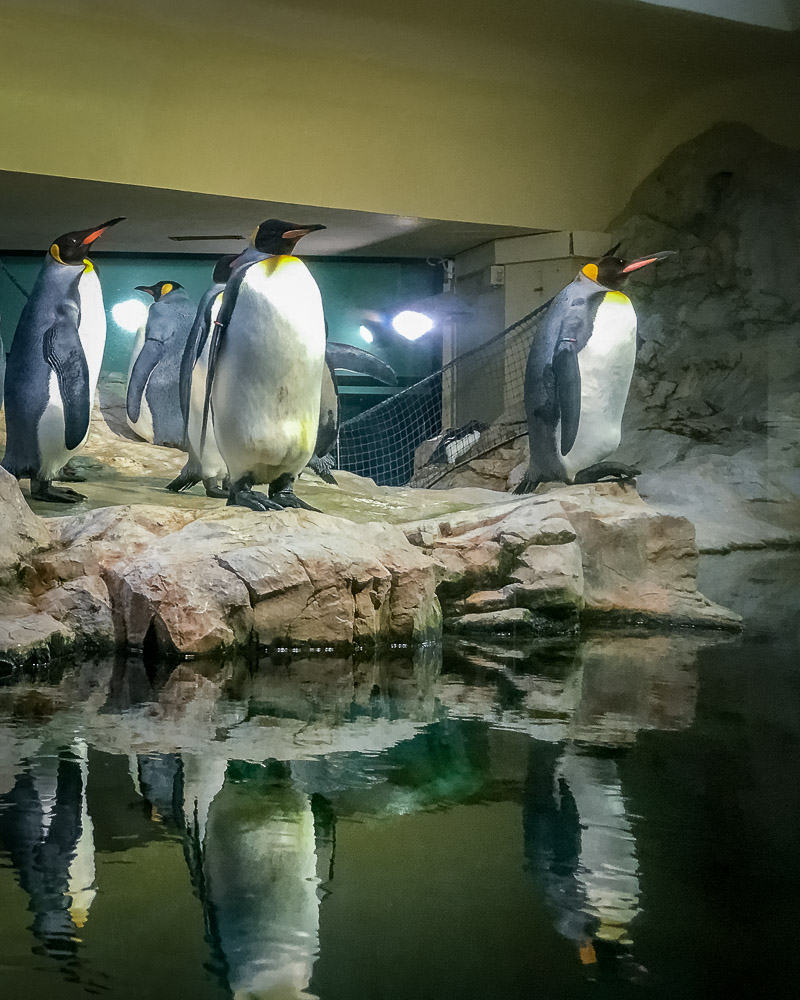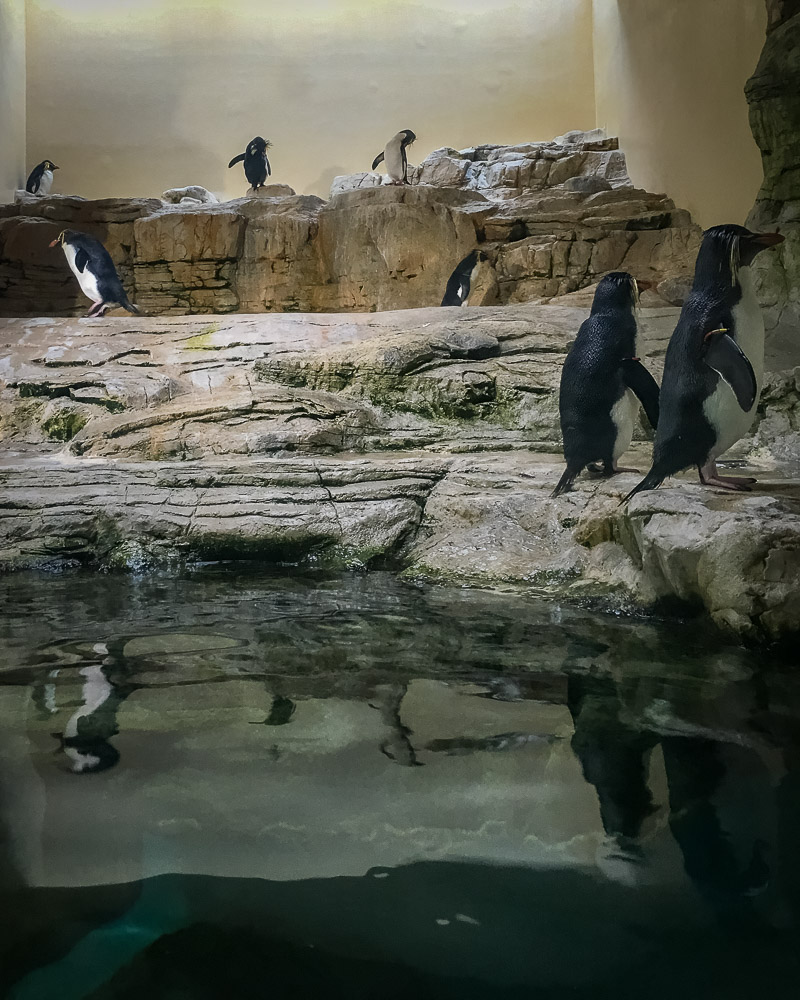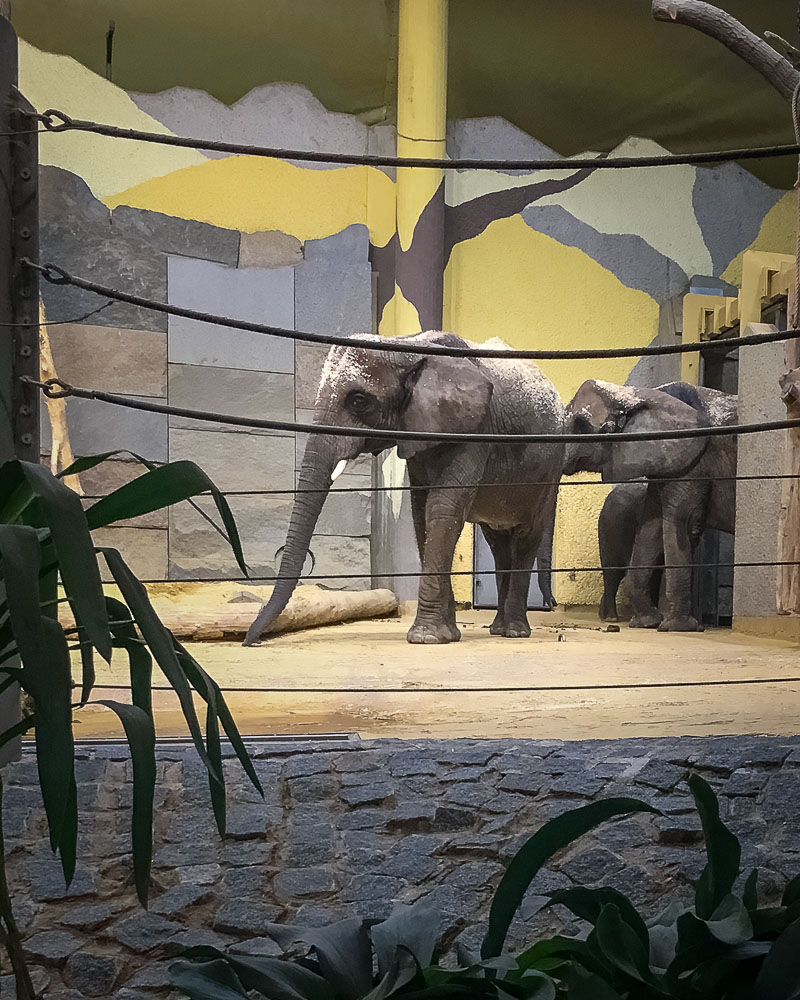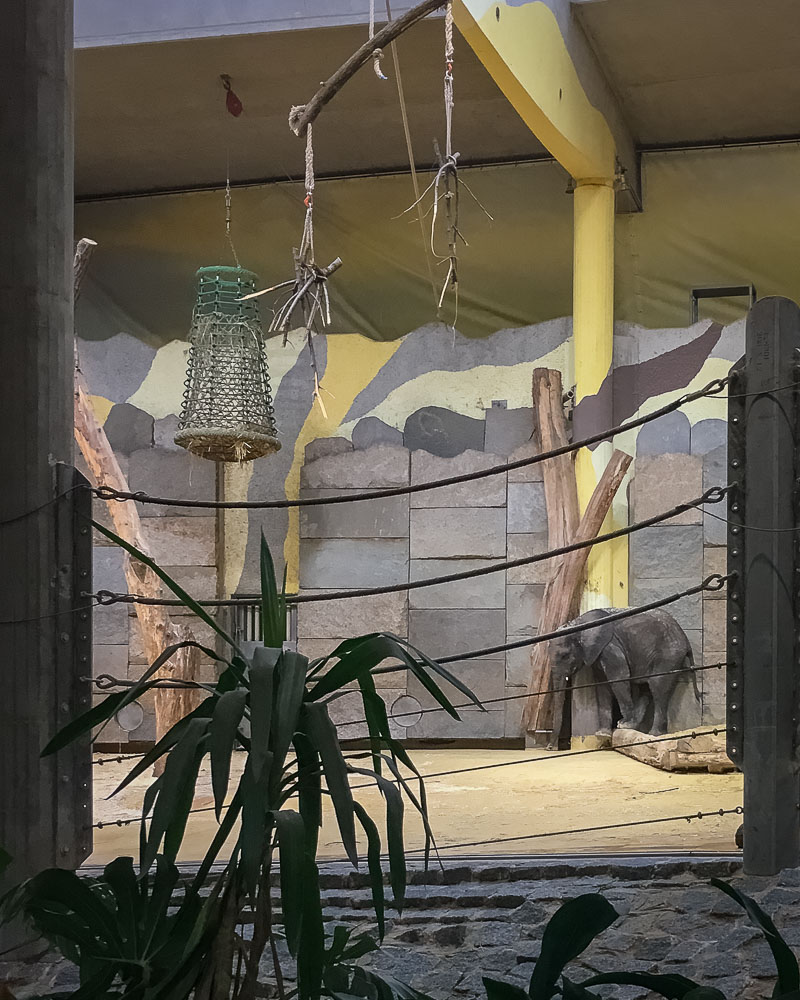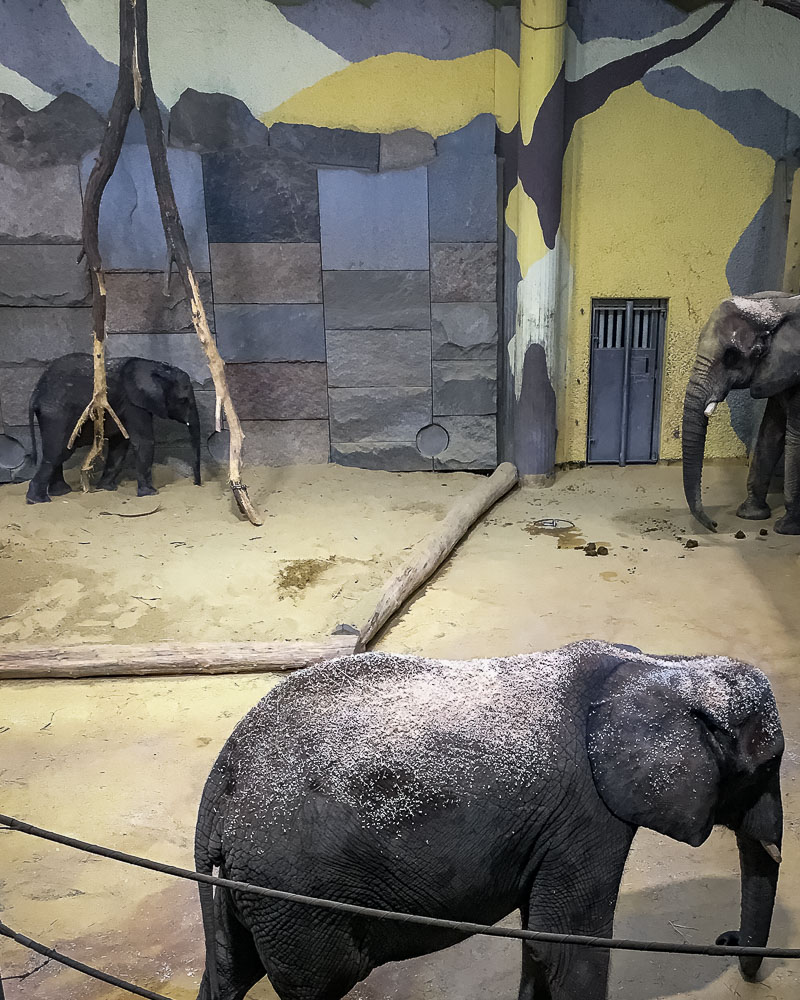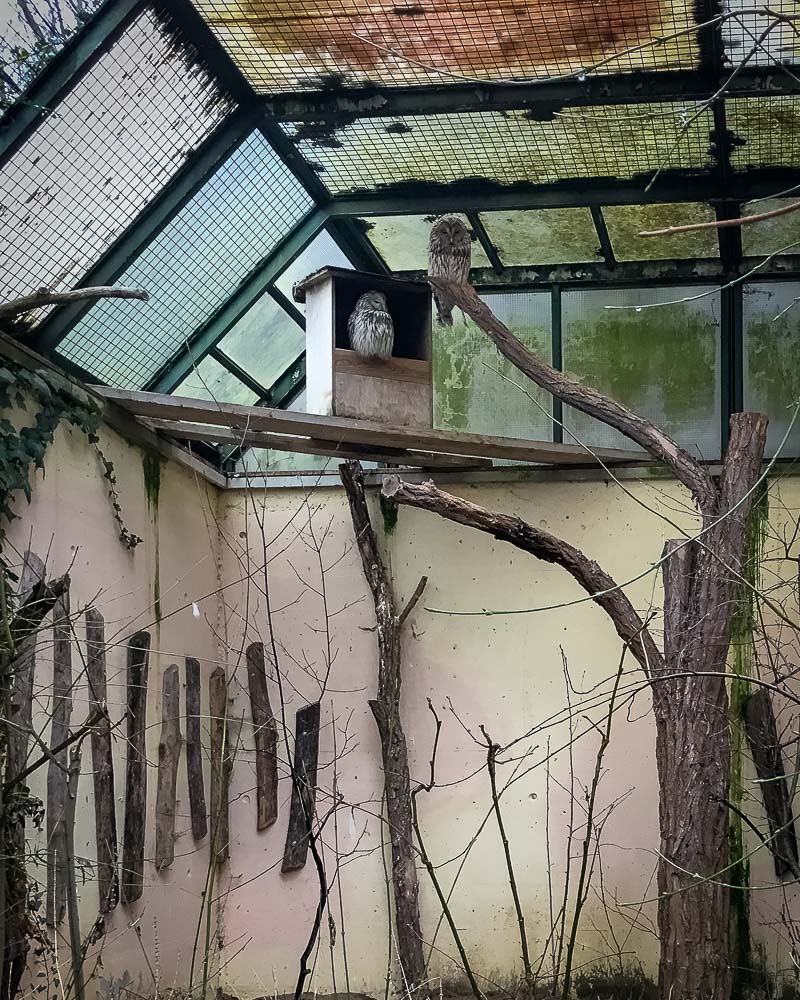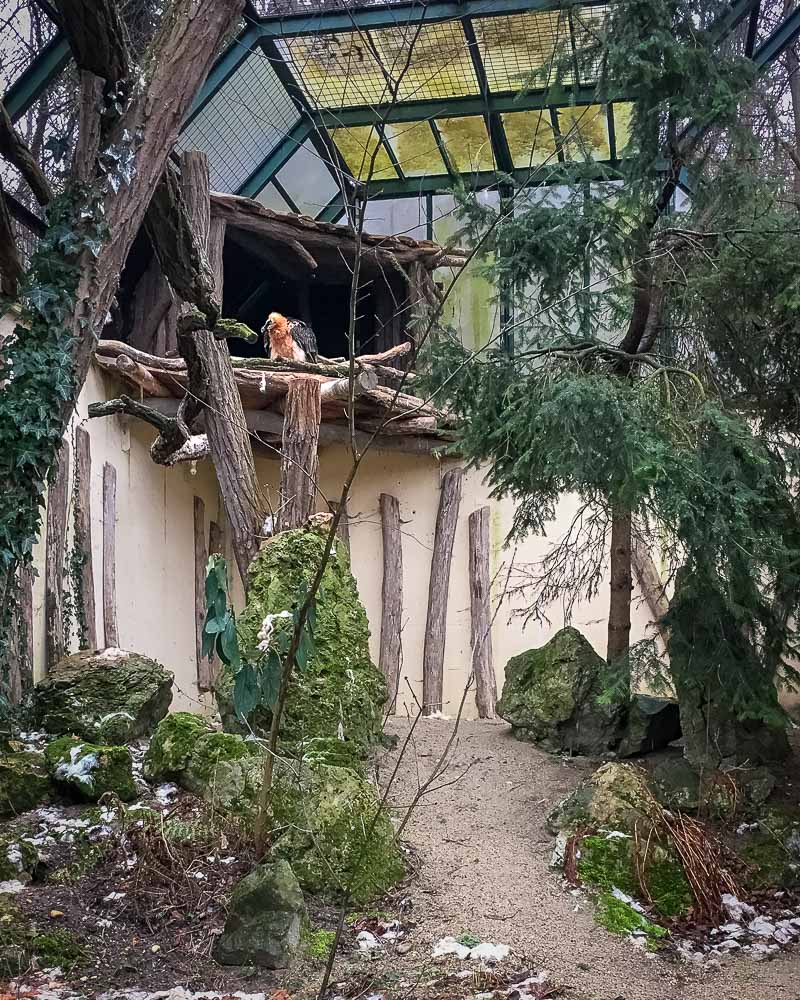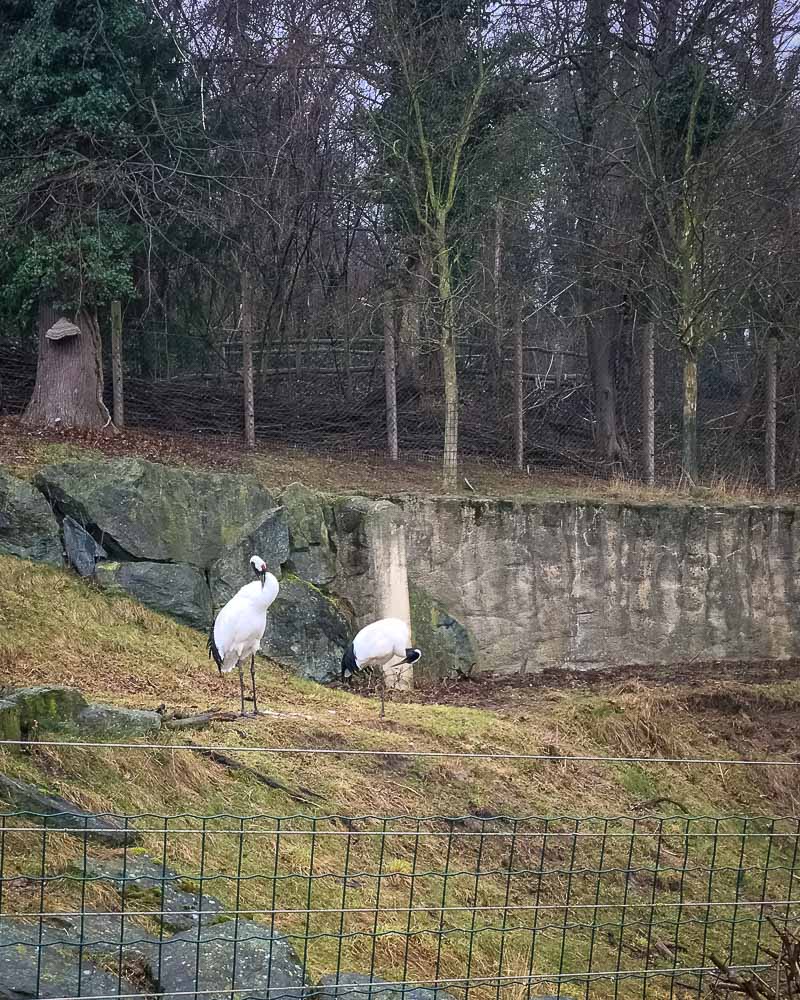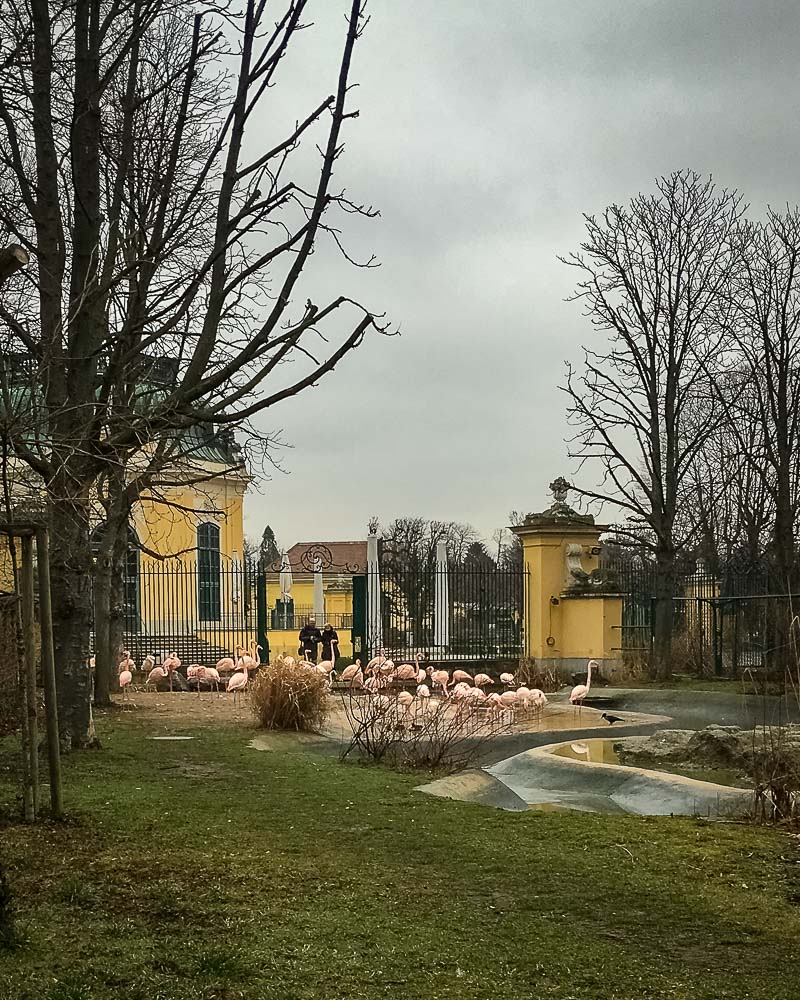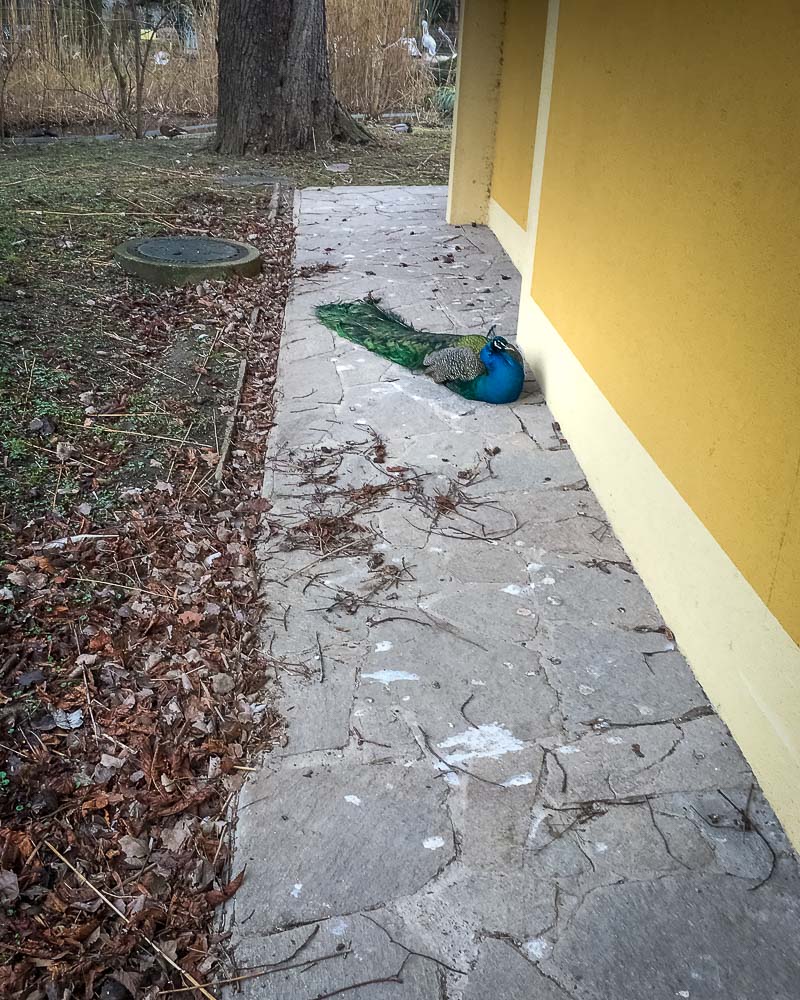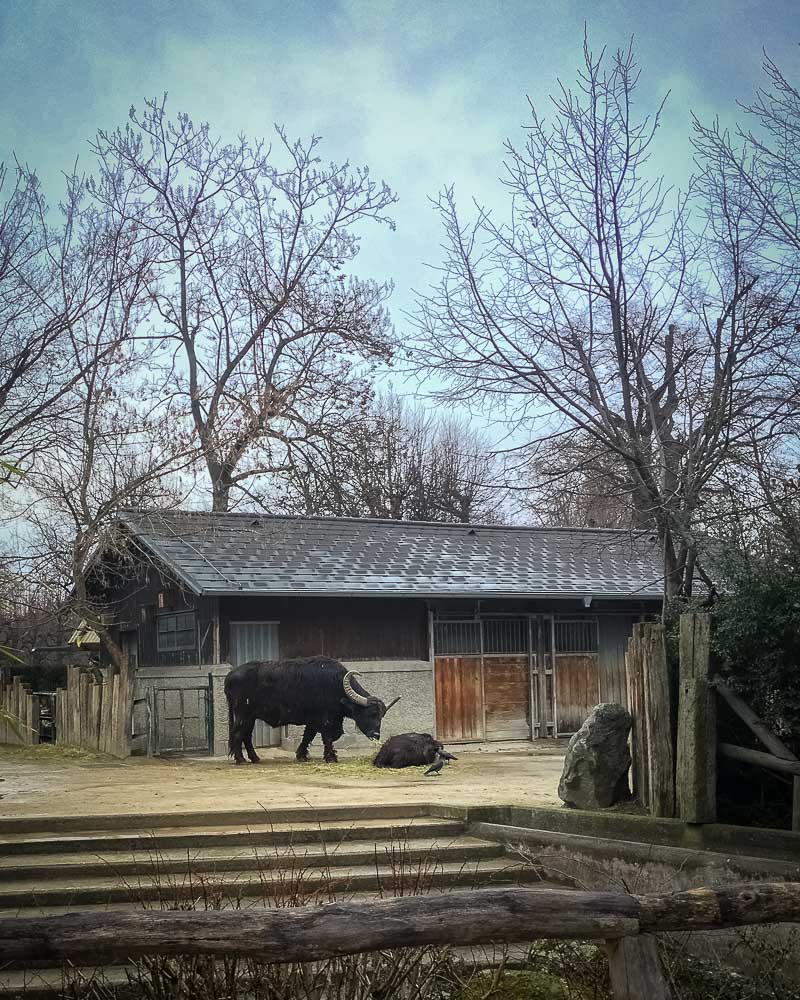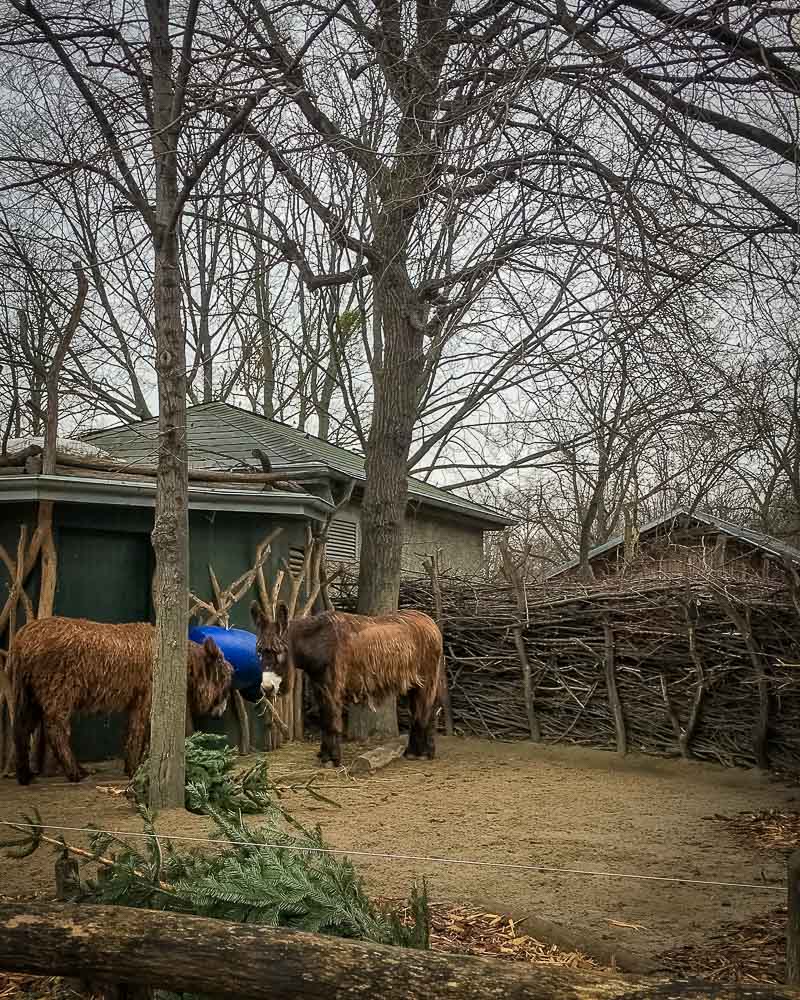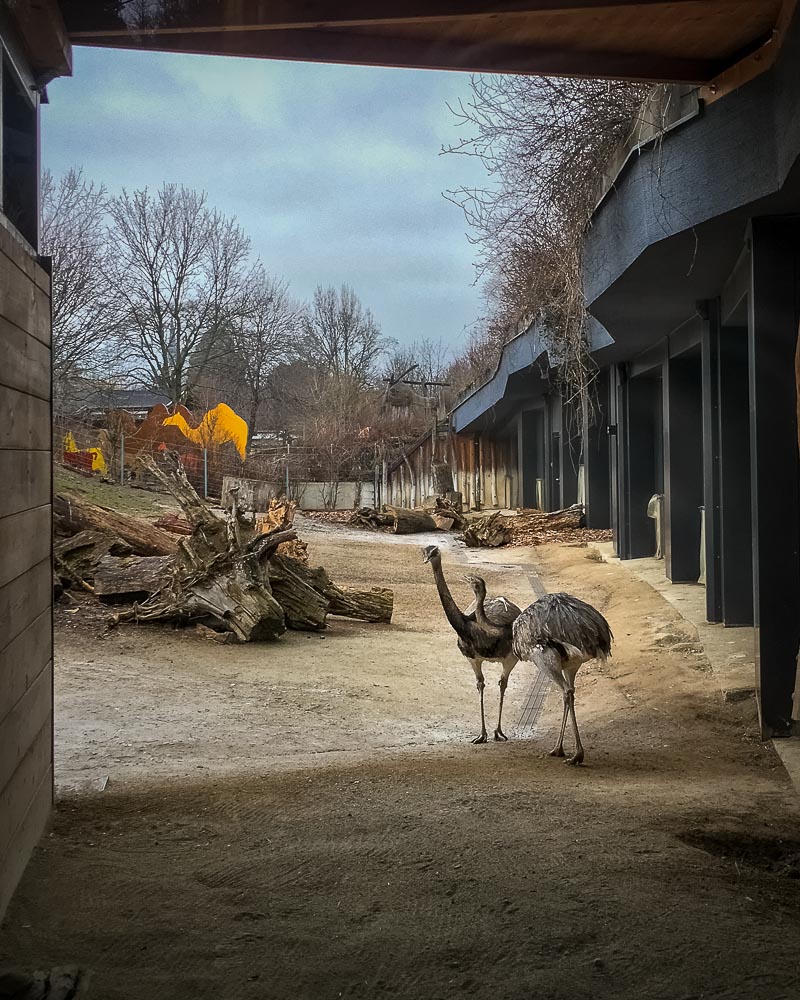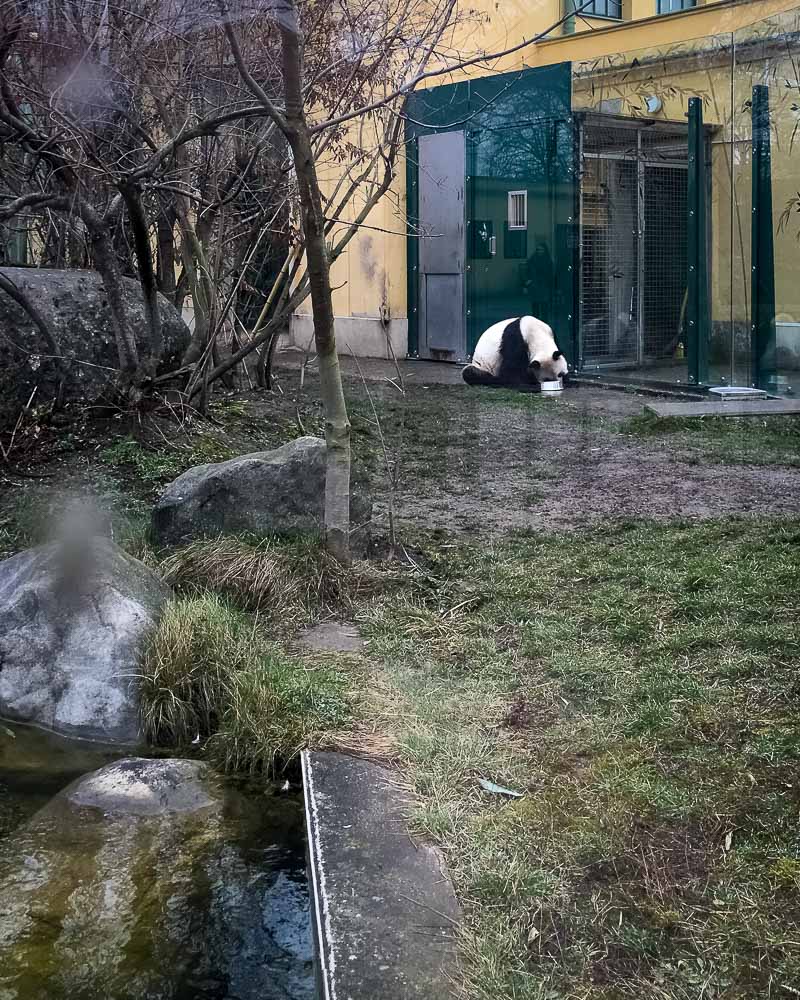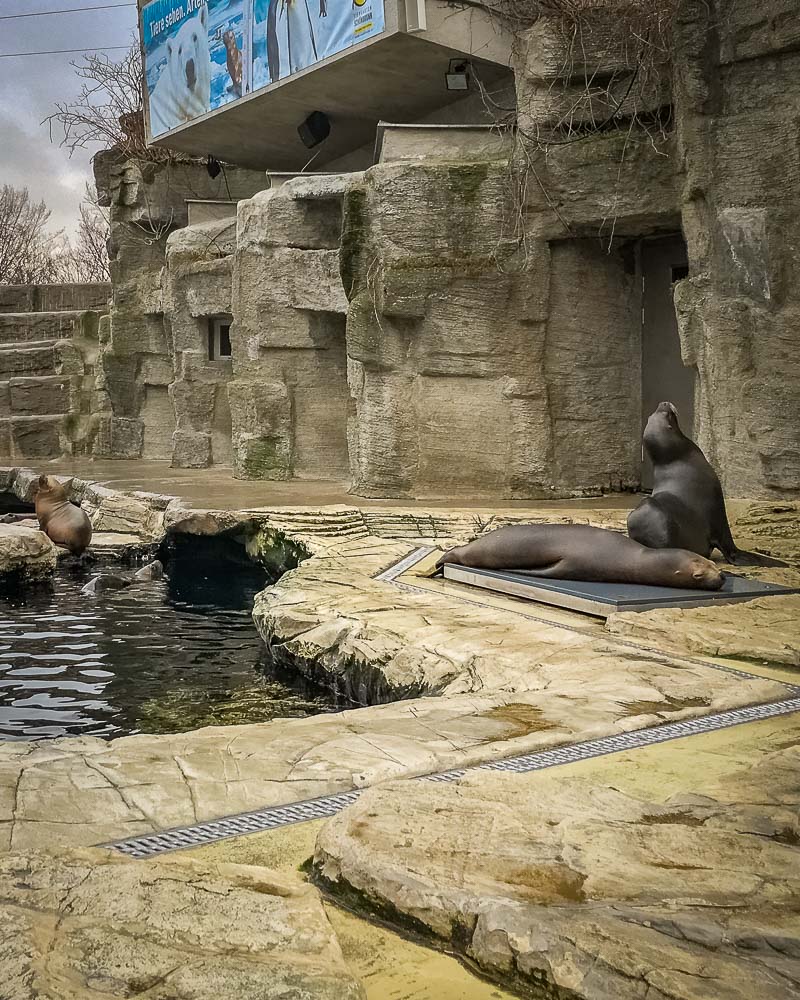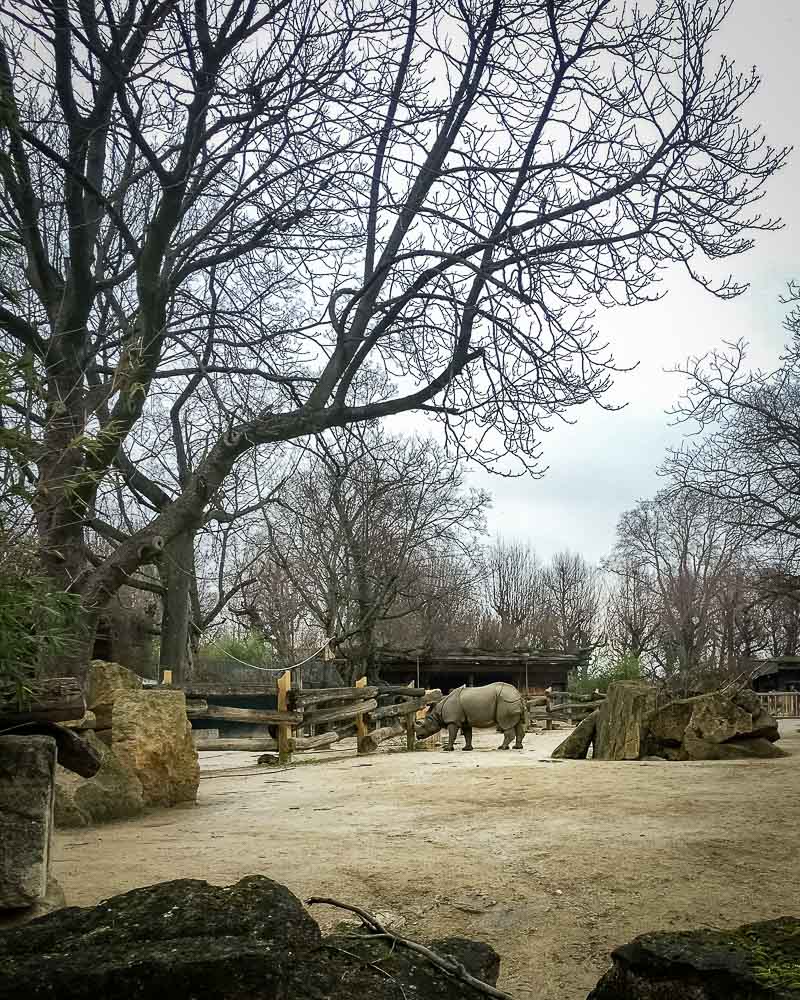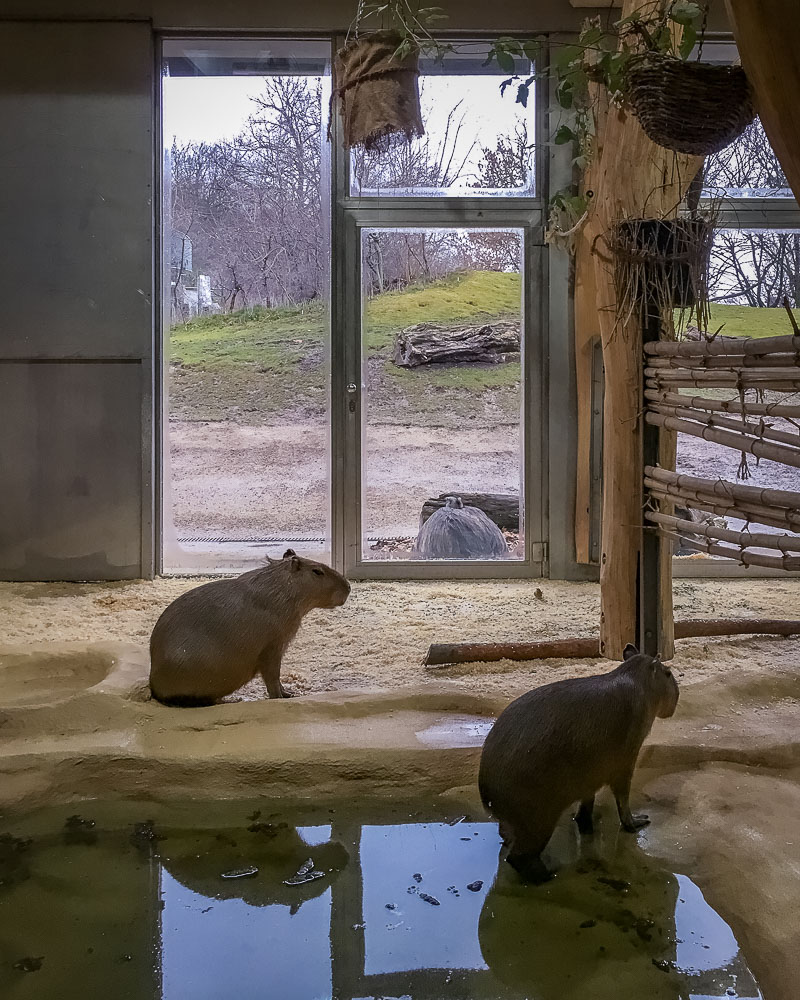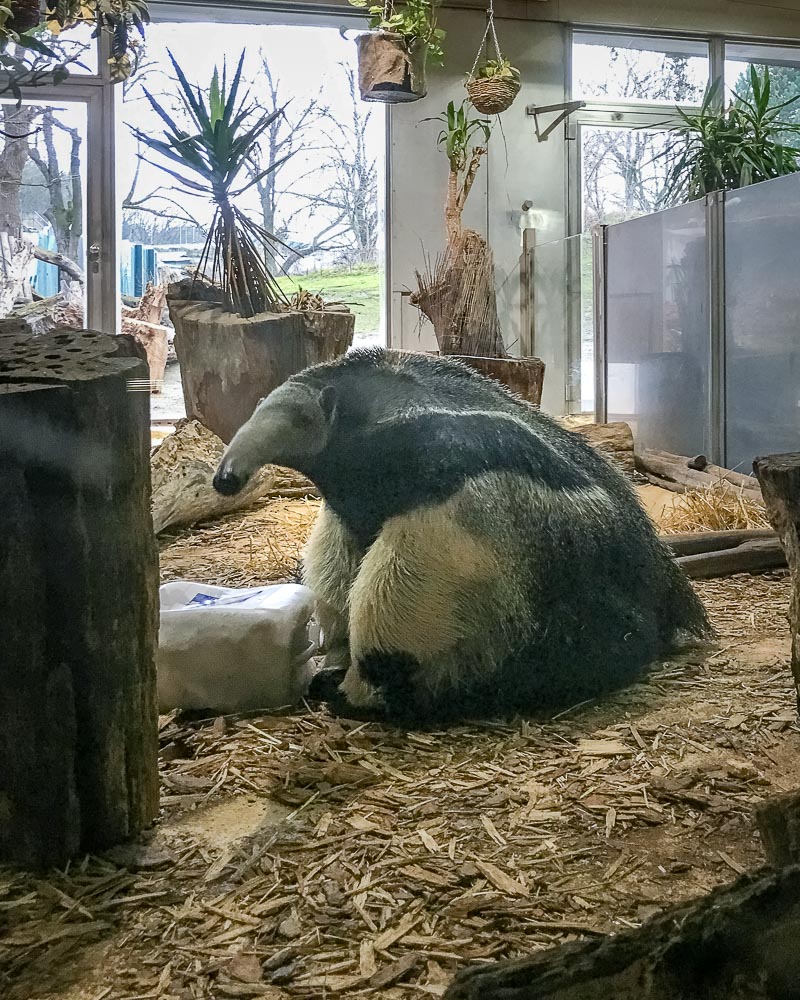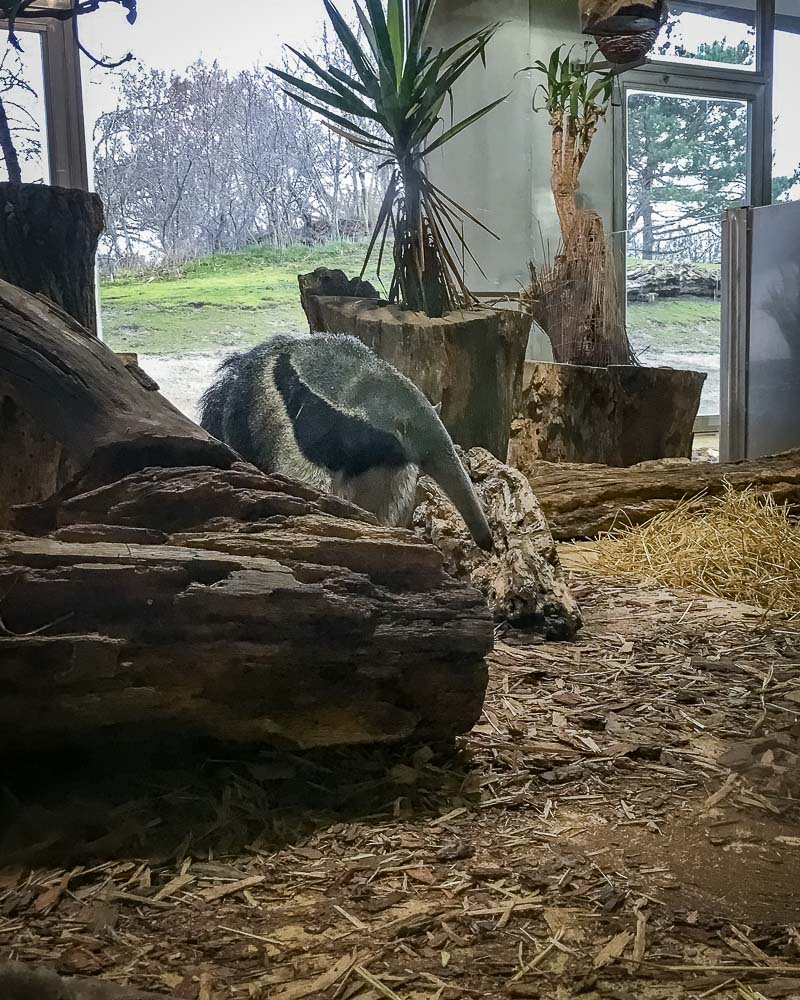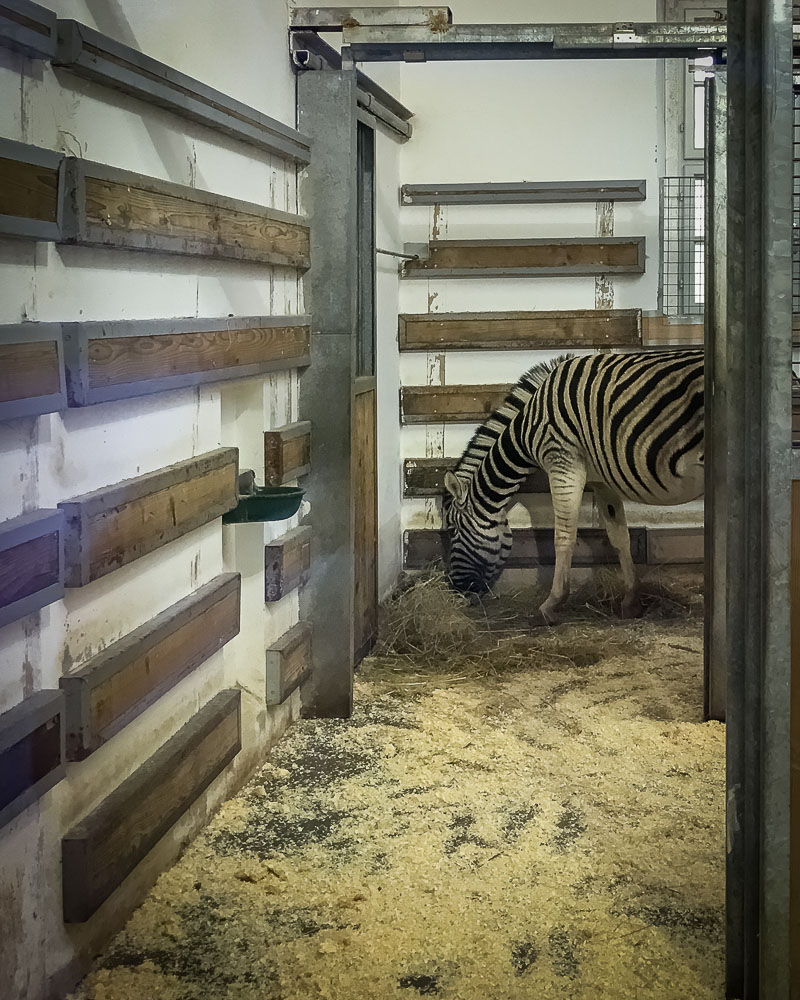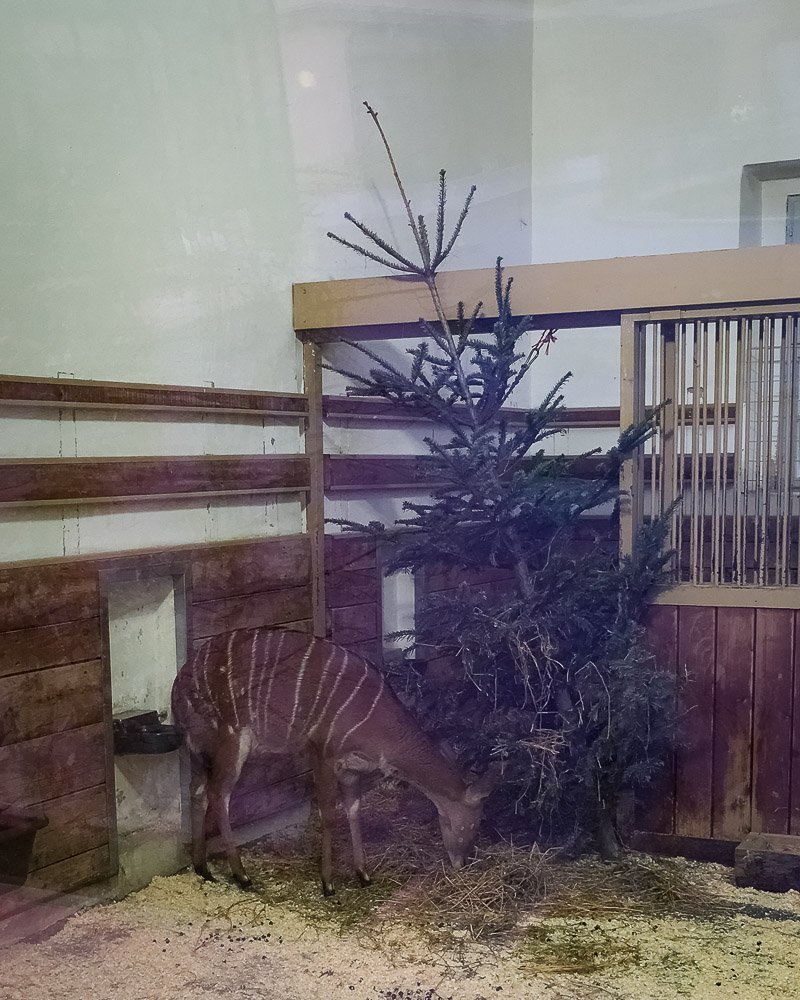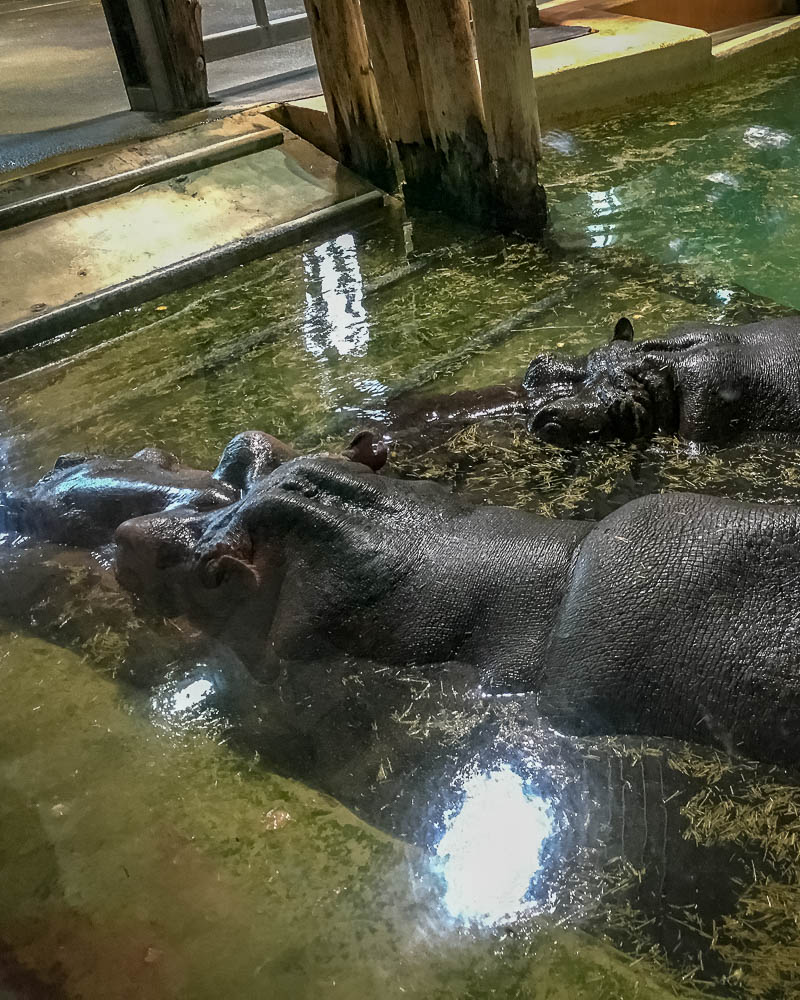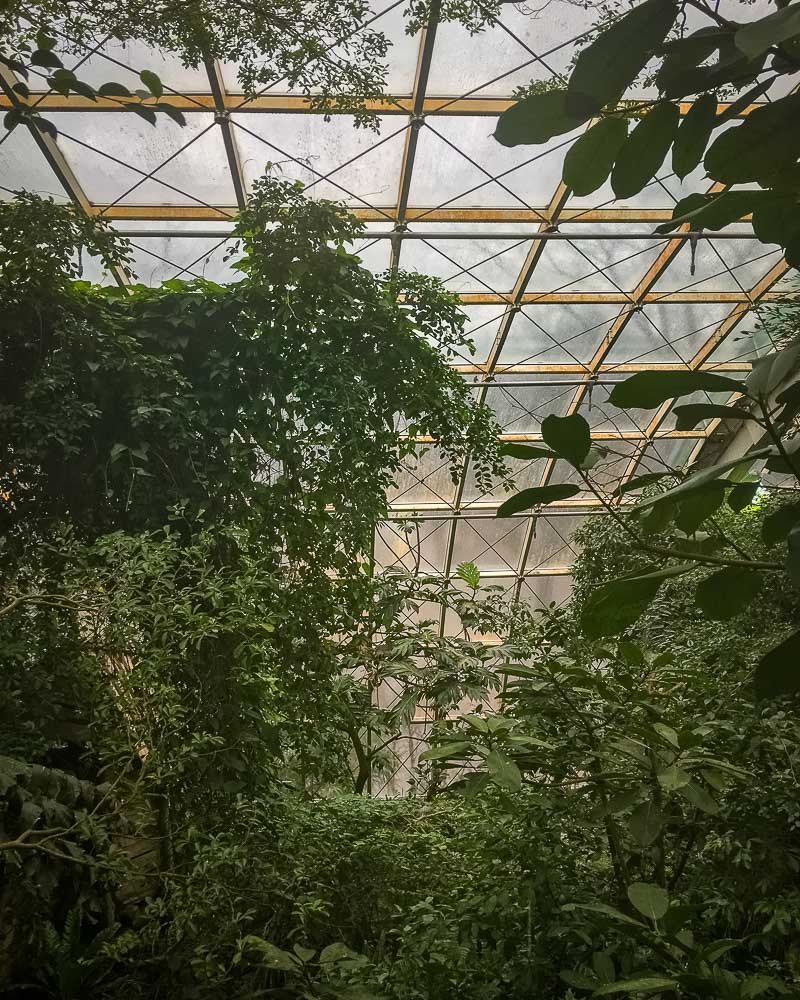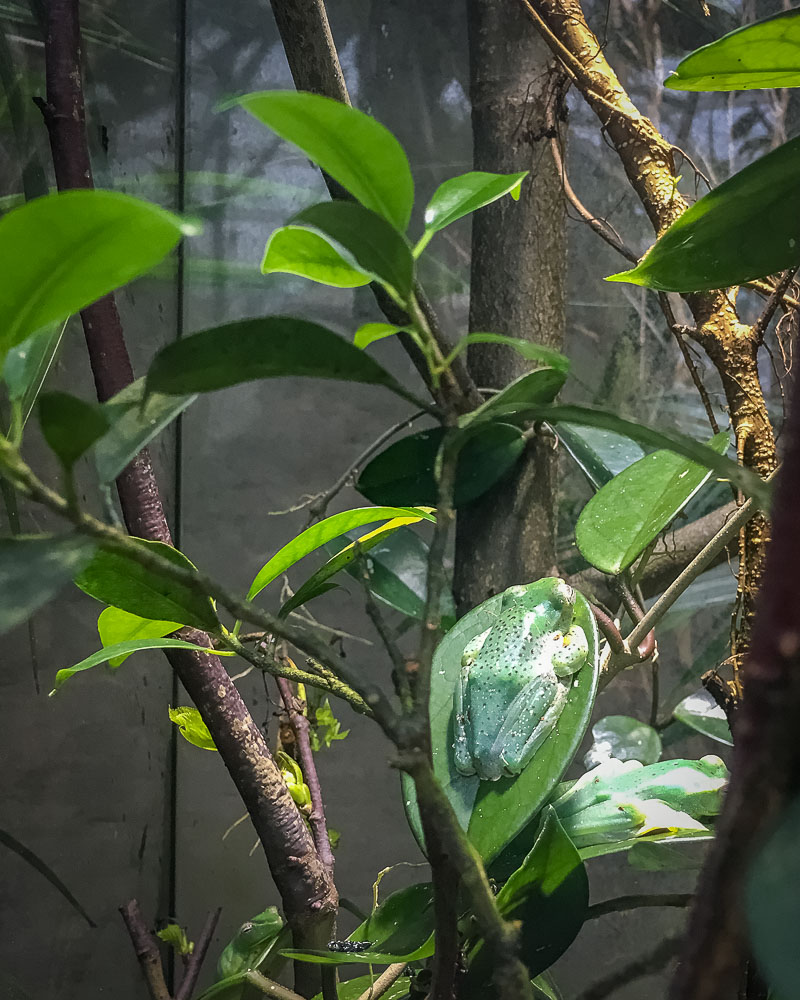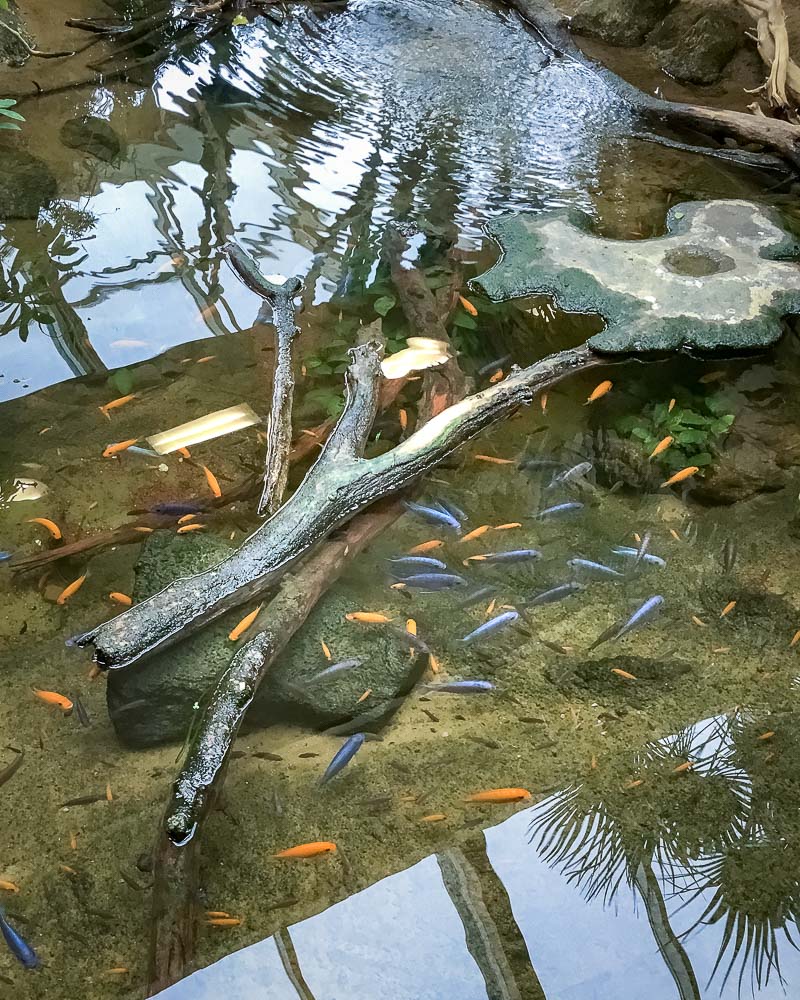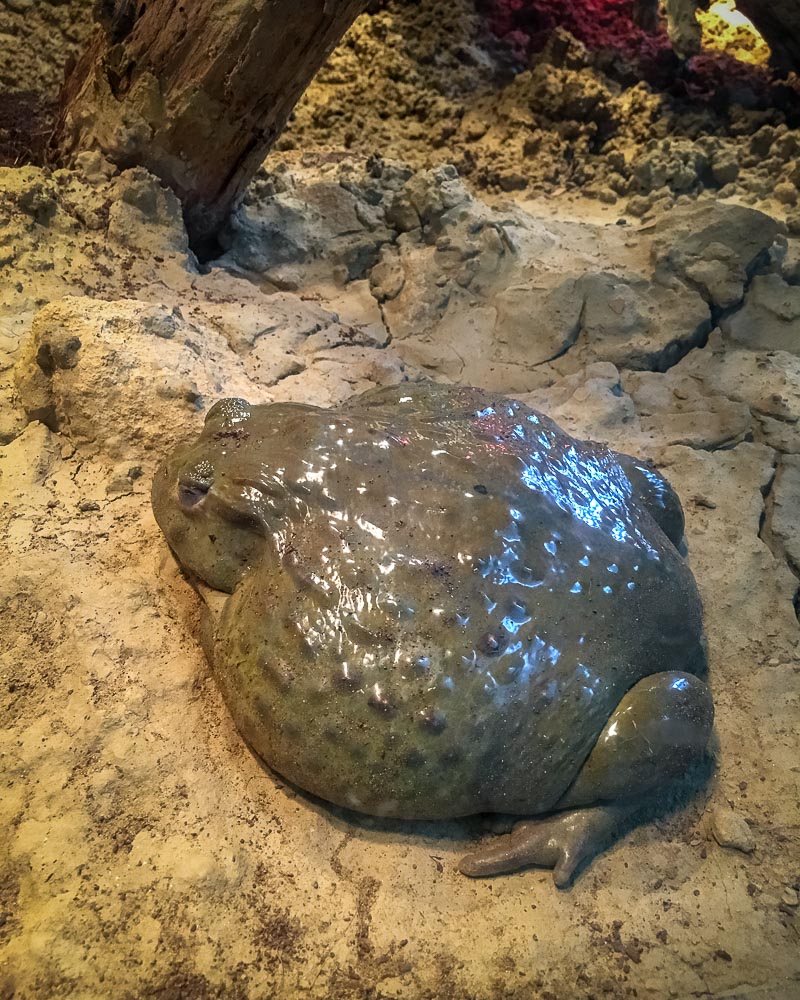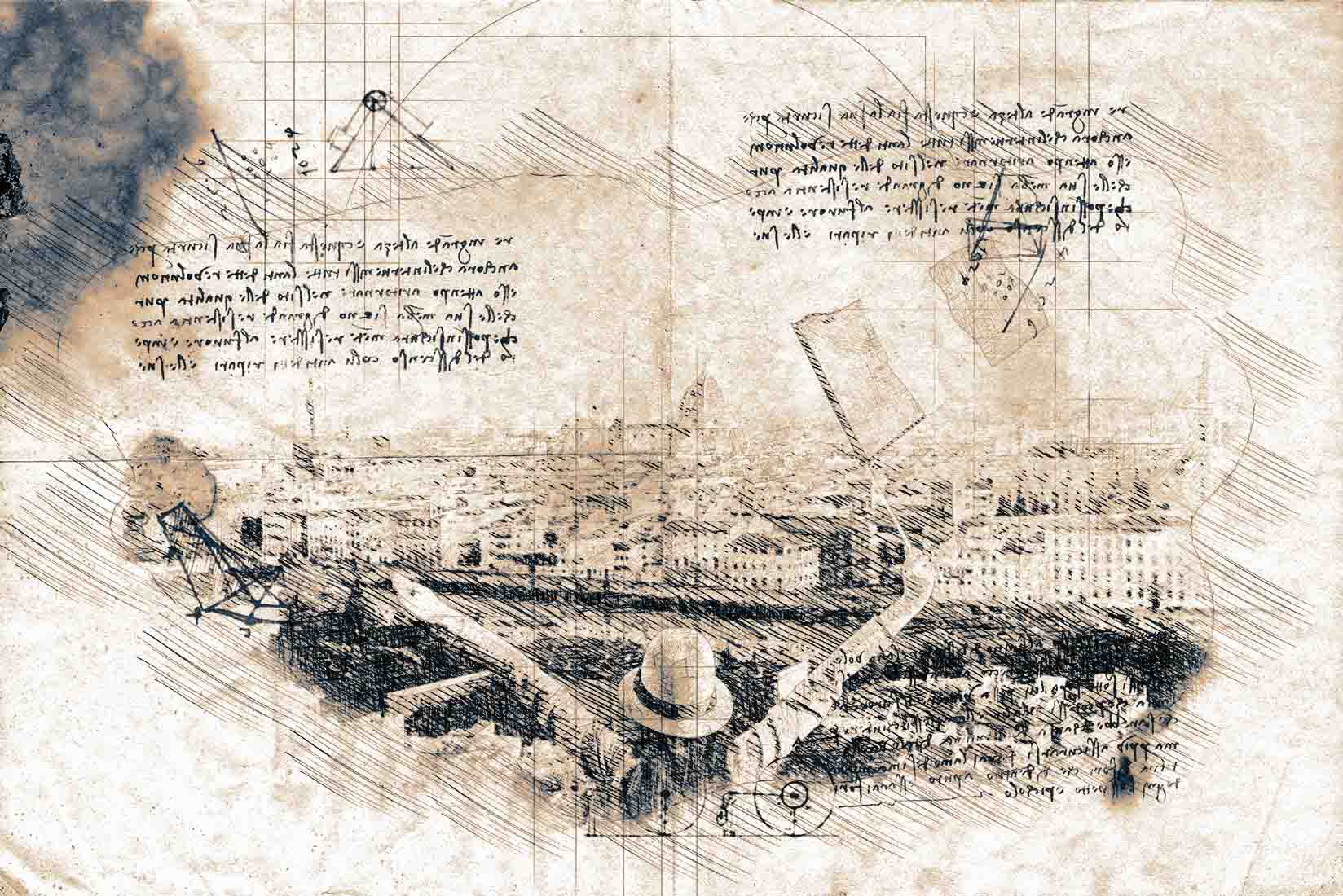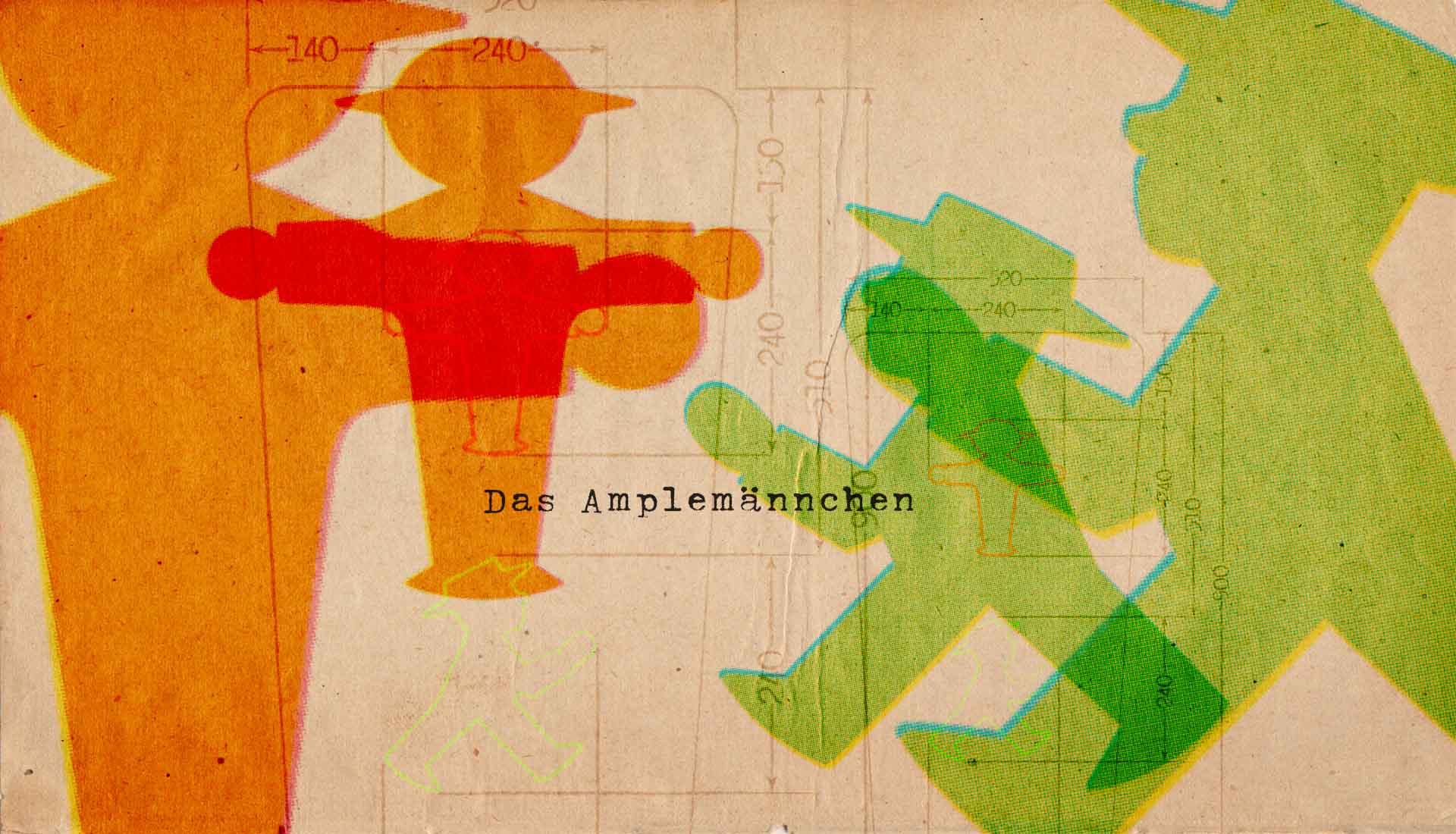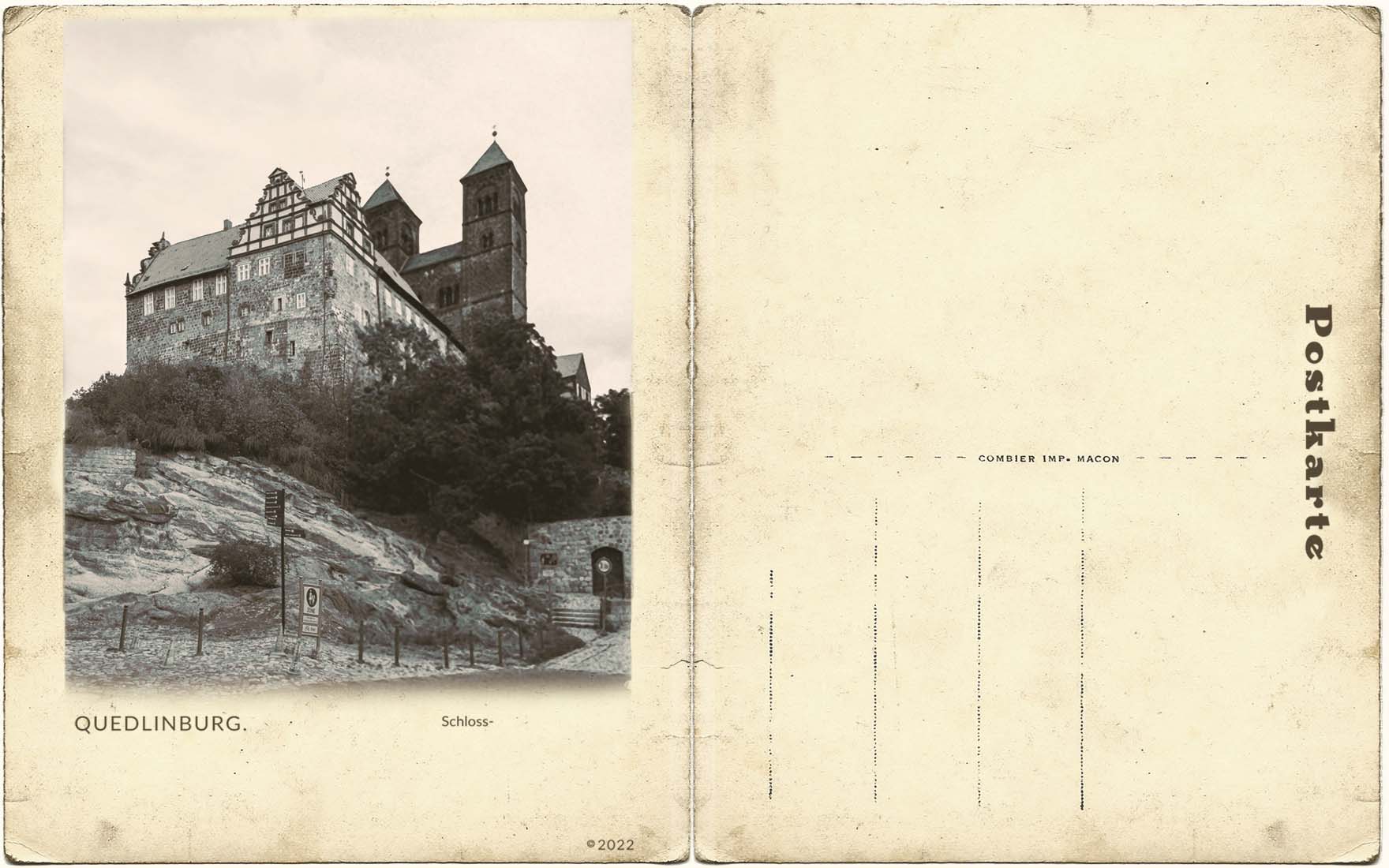he zoo is practically empty because it is cold, and rainy, and early in the day. I do not mind the cold or the rain...and I welcome the solitude as I meander among the animals. I am able to take my time and watch the animals without people blocking view. Tiergarten Schönbrunn (Schönbrunn Zoo), is located on the grounds of Schönbrunn Palace and is the oldest zoo in the world. Founded as an imperial menagerie in 1752, it is considered a scientifically administered zoo which sees species conservation as its main purpose today. The buildings of the baroque era are complemented by elements of modern zoo architecture.
Originally, the complex consisted of twelve enclosures, each with animal houses of equal size, a pond, and two courtyards. In the summer of 1752 – after about a year of construction – the menagerie was opened to guests. The last part to be completed in 1759 was the octagonal pavilion in the center of the complex, designed as a breakfast and social hall. It still represents the historical center of the zoo today. Since 1949 it has been used as a restaurant.
Initially, the menagerie was reserved for the imperial family but soon diplomats and private guests and school classes were among the visitors. In 1778, the menagerie, together with the palace and park, was opened to “decently dressed persons” – but initially only on Sundays.
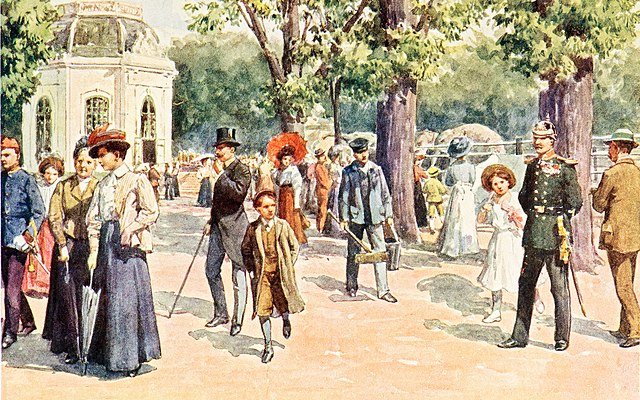
In 1770 the first elephant arrived and in 1781 wolves and bears. Around 1800, the first polar bears, big cats, hyenas, and kangaroos arrived, as well as another pair of Asian elephants. The exotic animals attracted visitors from Vienna and the surrounding area, as well as many foreign guests to the imperial menagerie. At that time the zoo was already open for daily visits. In 1828, Schönbrunn was gifted its first giraffes from the Viceroy of Egypt. Their arrival caused a sensation and influenced fashion, arts and crafts, and social life in Vienna.
At the onset of World War I, the zoo was home to 712 species and 3,500 specimens, but due to diminishing food supplies during the war, the number of specimens decreased to 900. Bombing raids in 1945 had an even greater impact on the zoo – many buildings were destroyed and specimens killed, reducing the stock of specimens to 400.
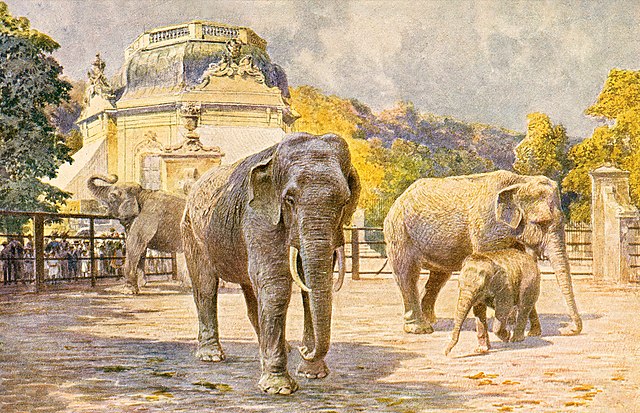
The penguins have both an indoor and outdoor enclosure. The indoor penguin house is really cool – the entire wall is glass (or plexiglass) – so you can see into the water to watch them swimming. Unfortunately, I think it is nap time as many of them are sleeping.
Lorem ipsum dolor sit amet, consectetur adipiscing elit. Ut elit tellus, luctus nec ullamcorper mattis, pulvinar dapibus leo.
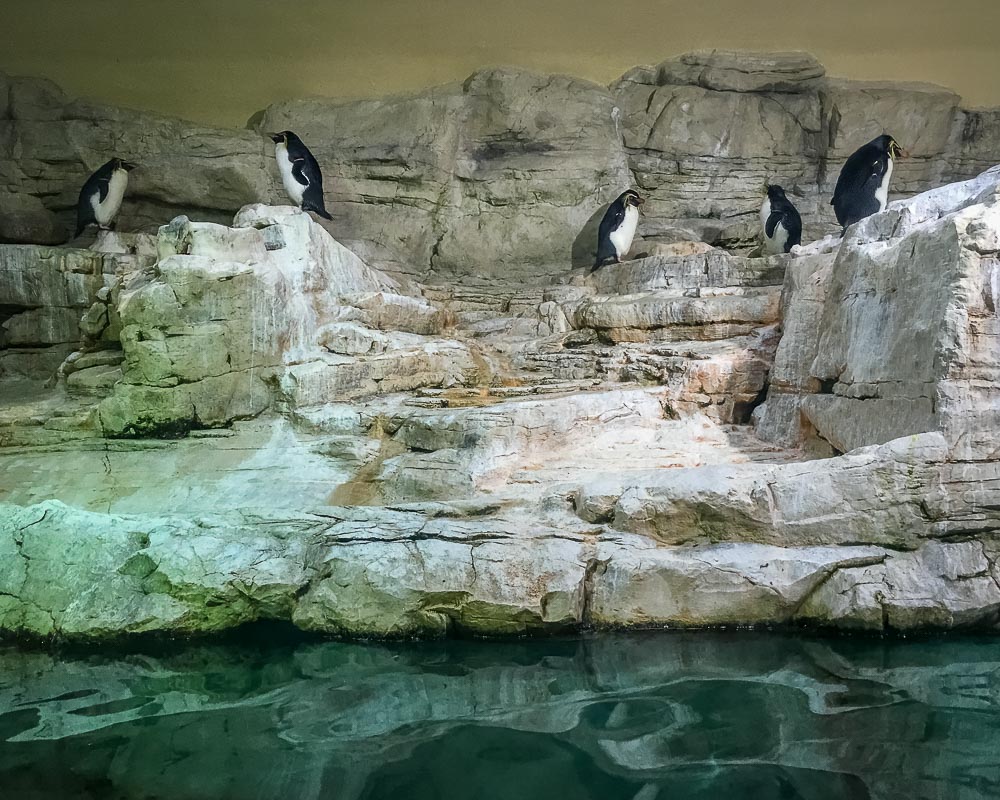
By now, I am chilled through to the bone and I happen across the elephant house. I go inside – it is very warm and only a few other people are in there. I sit and watch the elephants as I thaw. The baby elephant was cute and actually fell asleep against the wall.
Eventually I am warm enough to venture back out into the damp cold of the morning.
I continue my tour of the zoo. I want to see the giraffes but, unfortunately, their enclosure is under construction…darn!
I stop by each of the habitats hoping to catch a glimpse of the resident(s).
The nocturnal Ural owl that – despite its name – is found across Europe.
The near-threatened bird -of-prey Bearded vulture, which is the only carnivore who’s diet consists almost exclusively of bone.
The graceful and rare Manchurian crane – a symbol of luck, longevity, and fidelity.
A flock of colorful flamingos in a small pond.
A peacock sheltering from the damp.
A pair of water buffalo with their great horns.
A pair of shaggy asses munching on their hay.
Arguing emus.
A precious panda bear playing with his dish – a living fossil.
The tiger walking with his reflection.
Seals resting in the mid-morning grey.
The armor-plated ancient rhinoceros – a hold over from a long ago era.
Pelicans pelicaning in a watery enclosure.
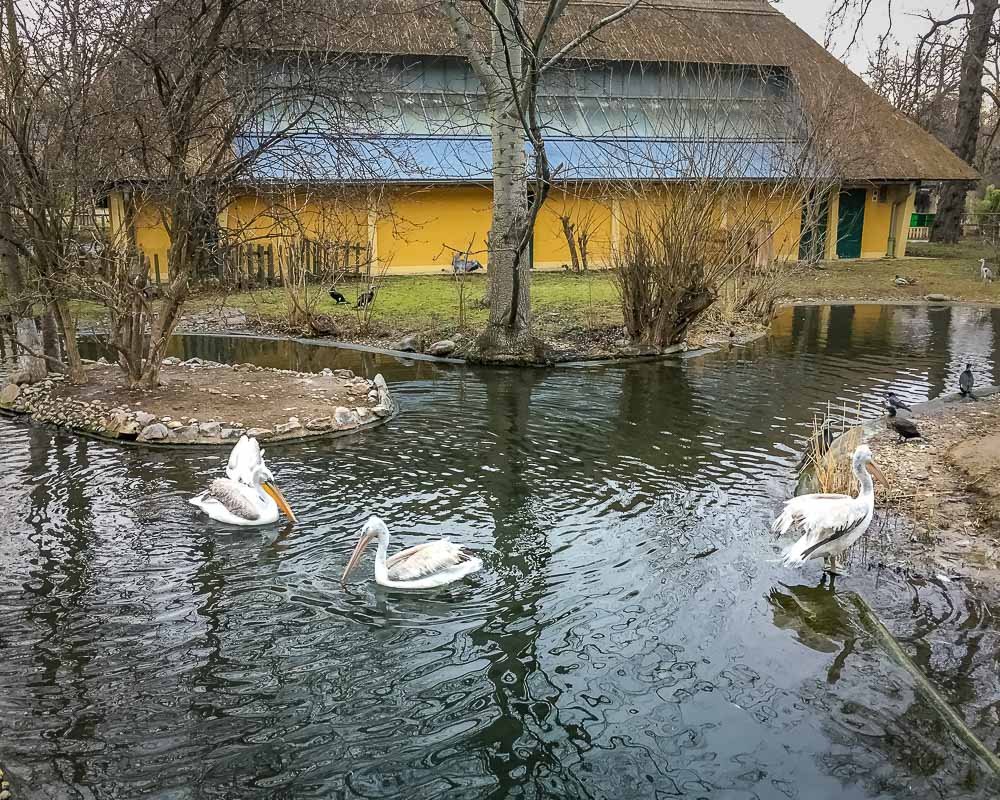
I am getting cold again despite the slightly warming temperature. I nope the insect house and duck into several of the indoor terrariums.
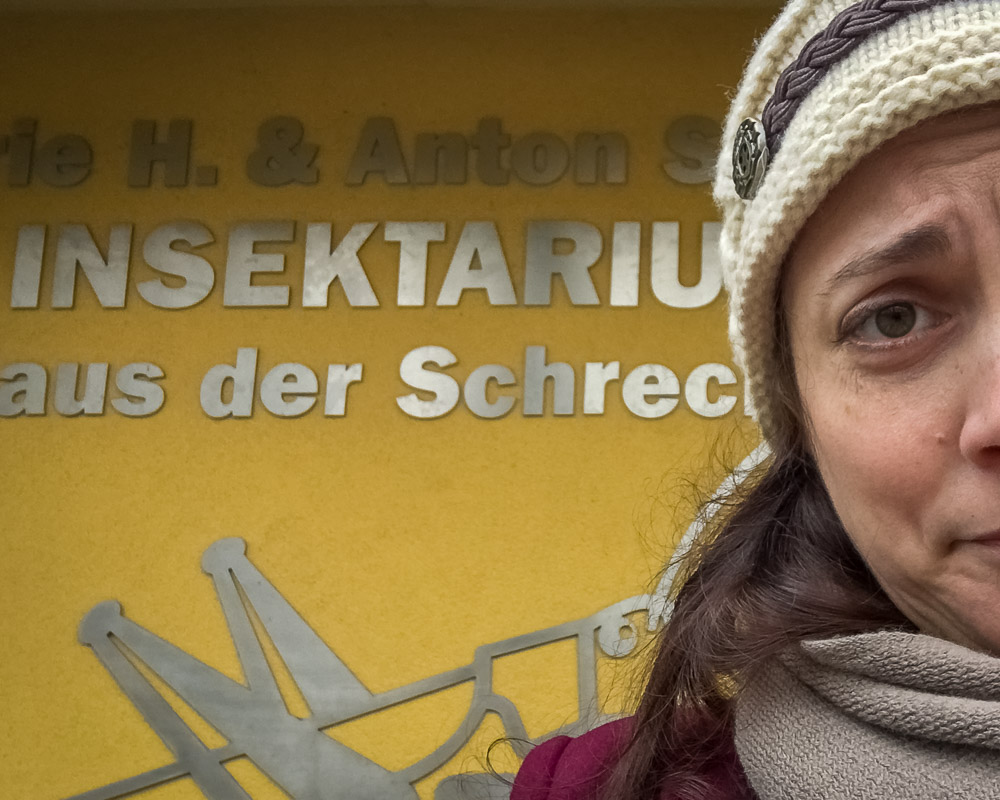
I visited South America to see the giant guinea pig – the capybara and the oddly cute anteater. I saw the seriema – the remaining living relative of an ancient group of gigantic carnivorous “terror birds.”
In East Africa I saw a zebra and a small striped deer for which I lost the name. Deadly hippopotamuses slowly glide through swampy water. Three ring-tailed lemurs huddle on a tree branch.
In the rainforest house, I am greeted not with the dry warmth of the South America and East African houses – but with hot, sticky humidity indicative of the tropics. Here, the entire space is filled floor to ceiling with plants of all kind. Within the plants, I find a huge African bullfrog, many fishes in warm ponds, an unknown green frog, and several small birds, snakes, and lizards.
The highlight of the tropical house is the bat cave in which you walk through a darkly lit cave surrounded by flying bats.
At this point, I think I have seen all of the animals although I am not sure because I did not grab a map on entry and I have not proceeded very systematically. Despite this, I am certainly too tired to continue even if I did miss something.
I leave the zoo to find my next stop (the labyrinth) but it is closed for the season. I really wanted to do the maze…a long time desire of mine. I guess it was just not meant to be.
I leave the zoo to find my next stop (the labyrinth) but it is closed for the season. I really wanted to do the maze…a long time desire of mine. I guess it was just not meant to be.



